- Details
- Written by: Martin Pramatarov
- Hits: 1769
While Ruse is a nice city, a few foreigners will go straight ahead and visit it. I should admit that my first visit here was very brief. Just 8 hours during a -10 winter day. But now it was almost summer, so I and G gave it another go. So, can you visit Ruse and see everything in a day? Let’s find out.
Where is Ruse?
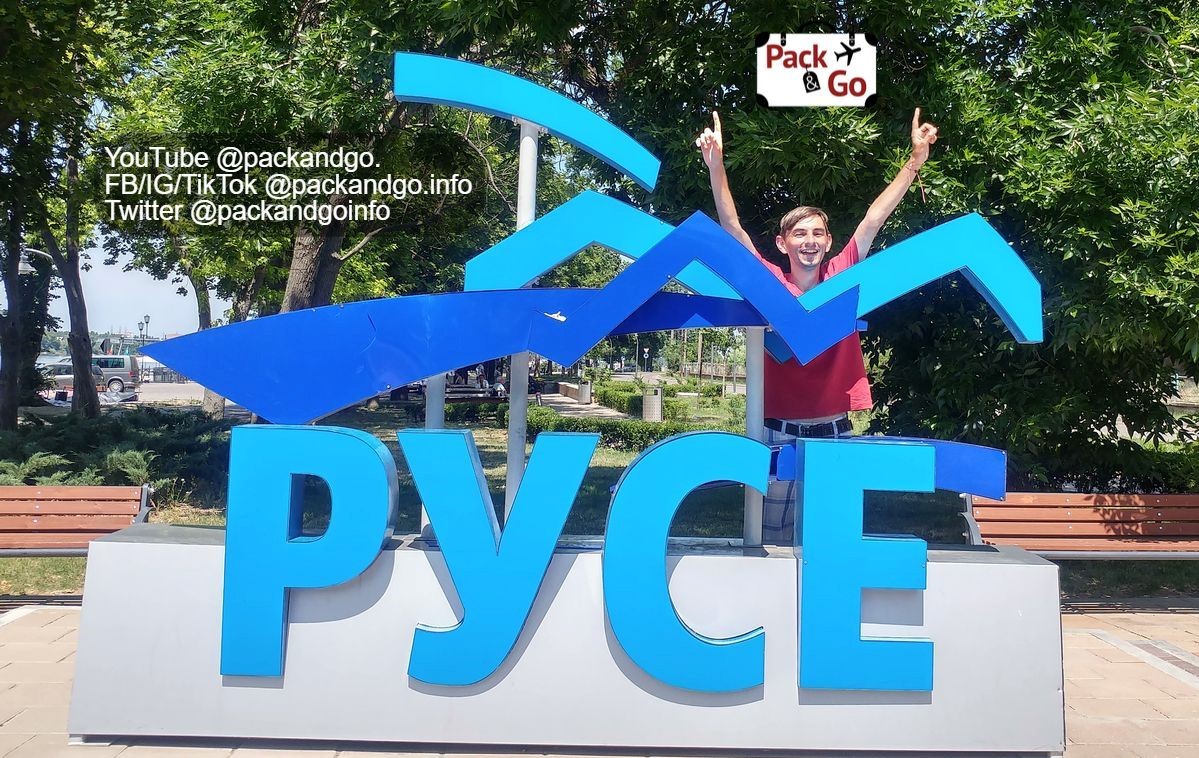
Ruse is a Bulgarian city, that is located on the bank of the Danube River, in central-north Bulgaria. On the other bank of the Danube, there is the Romanian city of Giurgiu. Just for reference, Guirgiu is around 75 km away from the capital of Romania – Bucharest.
What to do in Ruse in the morning?
This time we arrived in Ruse by car, from Romania to see some dear friends. But let’s imagine a popular scenario.
So, you have arrived at the train station or the bus station. They are located very near to each other. The best thing that you can do in Ruse in the morning is to get a warm breakfast and a coffee and head up to the Ruse TV tower which is close.
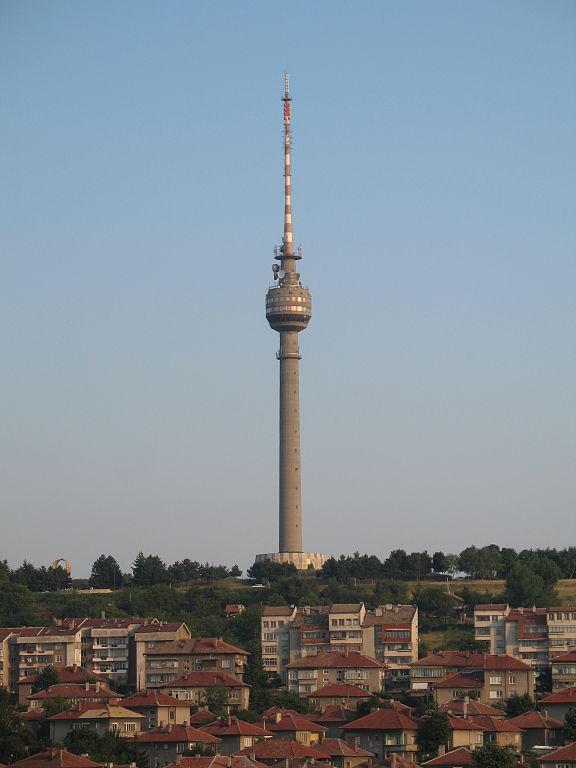
Bulgaria has many impressive breakfasts in its bakeries. We recommend you Banitsa with cheese, Milinka, or Kifla with marmalade. They will give you plenty of energy for the day. I prefer to start my days with coffee, but if you are into trying fully the local culture, you can get a Boza or an Ayrian. Both have very special tastes.
Let’s get to the attractions.
Leventa sightseeing spot and Ruse TV tower
The walk from the train station to Leventa and the Ruse TV tower is around 25 minutes. It is a perfect way to burn the calories from the Bulgarian breakfast.
Leventa sightseeing spot offers you a 360 view of the city from Leventa Hill. That way, you can get a general idea of how big Ruse is, and what can you see there. Don’t worry, it is not a huge place and you can easily visit all the attractions in Ruse in a day.
Just next to Leventa is the Ruse TV Tower. It is the biggest TV tower in Bulgaria! 204 meters! Why so high you may ask? Because Ruse is located in a lowland, and there are no high hills around. That makes it a must to create a high TV tower, that can broadcast to all of the nearby Bulgarian towns and villages.
| Follow PackAndGo.info at: | |
| YouTube | @packandgo. |
| @packandgo.info | |
| X | @packandgoinfo |
| @packandgo.info | |
| Bluesky | @packandgo.bsky.social |
| TikTok | @packandgo.info |
Can you go up the Ruse TV tower?
No, you can’t climb the TV tower in Ruse. A long time ago, there was a coffee shop there, and later it was changed into a bar. But that bar has been more than 20 years out of service. Apparently, it was deemed unsafe, due to the lack of safe emergency exits. In 20 years nobody has fixed the problem and this is why Ruse is missing one great opportunity for tourism.
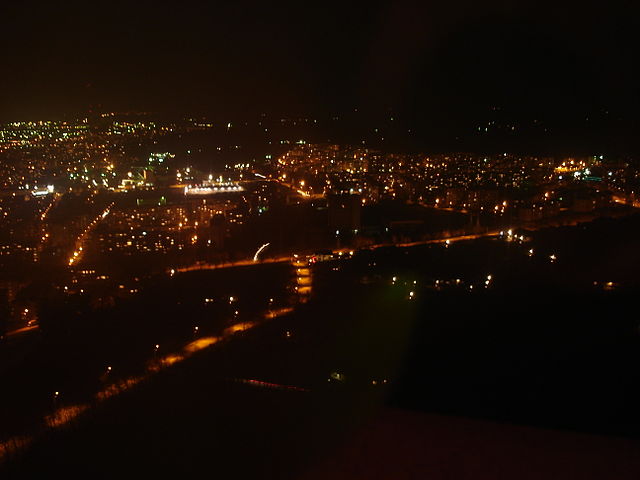
The morning is going great, but what else can you visit in Ruse?
OK, it is getting almost noon, so it is time to go to downtown Ruse. Walk or get on public transport. It is quite easy to use and very cheap.
If you have even less than 24 hours in Ruse, you can jump on a taxi, and ask for the Monument of Liberty (Pametnika na Svobodata). That way, you can save some time and the trip won’t be expensive. On the way there, you will see many “Panelki”, Soviet blocks of flats, gray as they were, when they were built ages ago. For me, they have some strange beauty.
What to do in Ruse during the day?
Visit the center of the Ruse
Ruse was the biggest city in Bulgaria, after the liberation from the Ottomans in 1878. It was a very well-developed city with both European and Turkish influence. You can see many beautiful old buildings with Italian, Australian, German, and Bulgarian style of architecture.
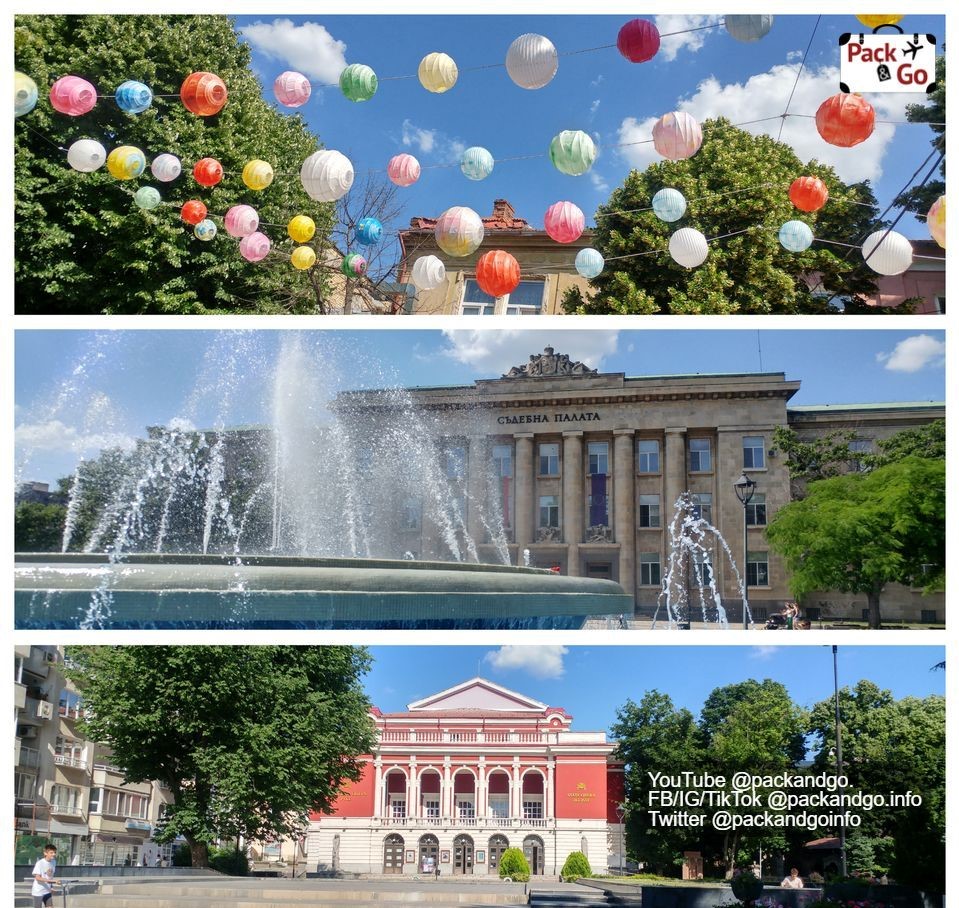
Because of the strong European influence, many call Ruse the “Little Vienna”.
As a person who has been many times in Vienna, I can assure you that the two cities have nothing in common, but I won't argue with the locals. Call your city the way you like!
Ruse is also pretty but in a very different manner.
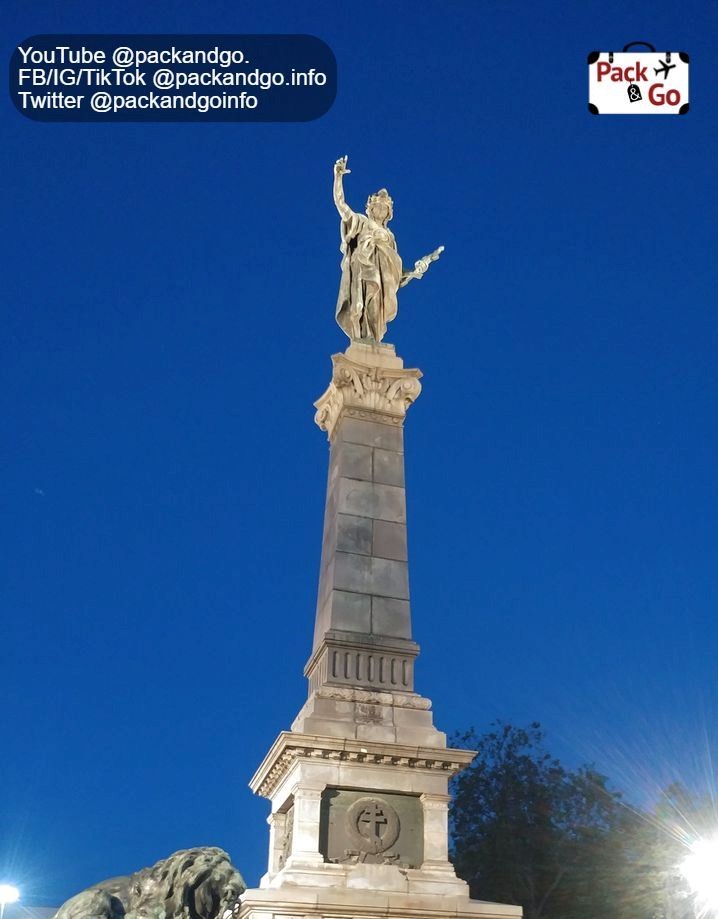
Right in the center, you will find Ruse’s Liberty Square (Ploshtad Svoboda). It is a very nice place to refresh a bit, have a break, and organize your trip. If you have just a few hours in Ruse, for sure you must visit Ruse’s center.
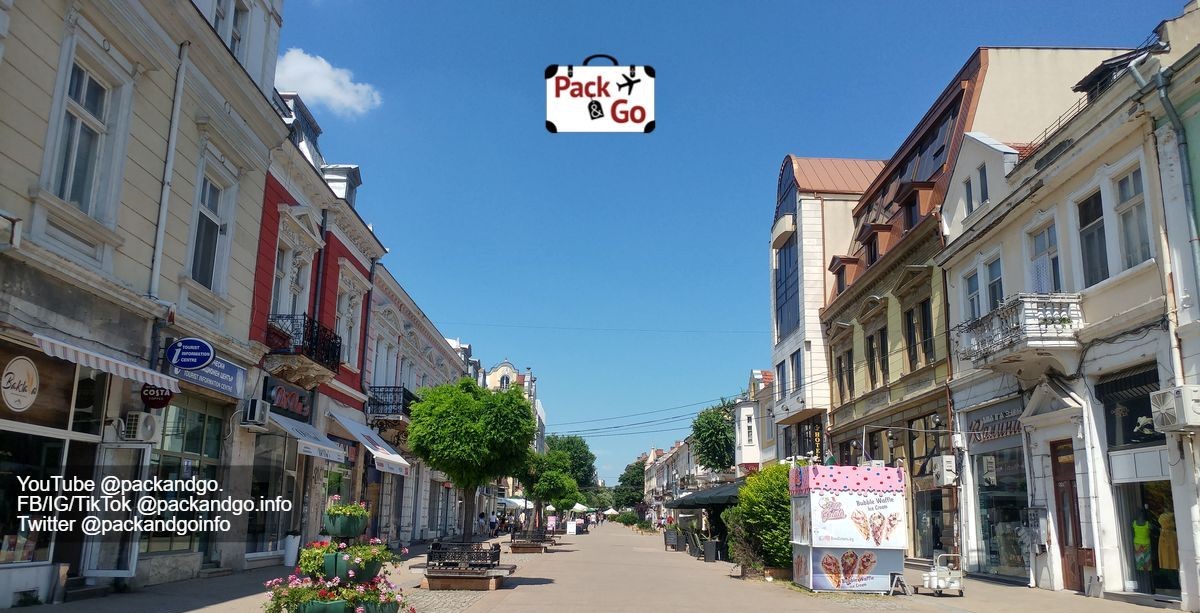
There are many small streets in the center worth walking. The best walking street in Ruse is “Alexandrovska Street” (ulitza Alexandrovska). You can choose to go to “Alexandrovska Street”, which is a long pedestrian-only street with many shops and restaurants. if you go east, until its end you will fisnish in Mladezhki Park, next to the Danube River. There, if you go in late spring or early summer, you can enjoy the multiple roses in its Rozarium. If you follow Alexandrovska street west, you will find the monument of Alexander of Battenberg (learn who Alexander Battenberg was) and the Regional Historical Museum.
The center of Ruse was perfect for meeting our friends. The funny thing was that both I and G had some dear friends in the city at the same time. We managed to meet them together, and we were at one of the loudest and most noisy tables in the city. Hahahaha.
We visit the city at the beginning of the summer and it was already quite hot. We took multiple ice creams. Luckily, there are many small shops on the way, where you can buy ice cream, and special ice cream shops, which have multiple flavors and sell by weight.
Remember. It is important to stay hydrated.
Walk near the Danube River
Pristanishtna Street (Ulitza Pristanishtna) next to the Danube River, is the place where you want to spend your late afternoon. There you will find “Kraibrezhna Aleia”, the Coastal Promenade of Ruse. It is a small and long park with the best view over the Danube.
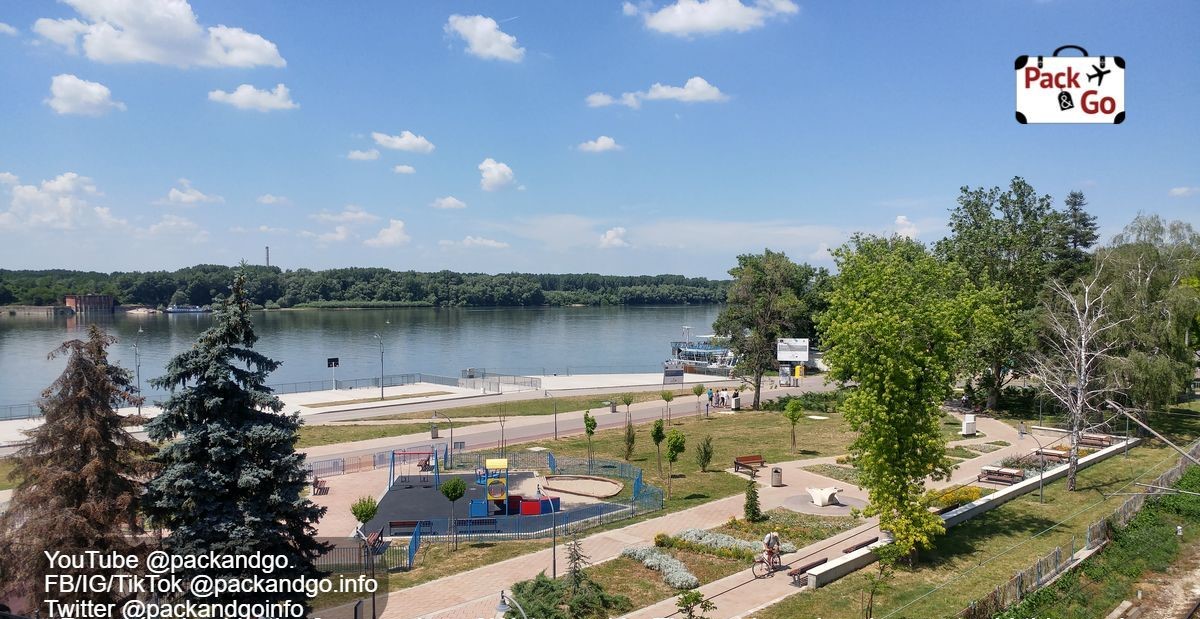
Since Ruse is relatively small, compared to Sofia or Varna, we were taking our time and enjoyed it without a hurry.
Now, that the sun is already going down, it is perfect for a cold beer. On your way, you will see a few small establishments, where you can stay for a refreshing drink and Tsatsa fish (sprat fish). These little fried fish are the perfect afternoon snack.
If you have still some time to spend you can see one of the other landmarks in the city.
Building in Ruse that has remarkable architecture are:
-
The Building of the Tax Administration in Ruse.
-
Ruse Regional Historical Museum.
-
Kaliopa House, the Museum of Urban Culture.
-
The Museum House of Zahari Stoyanaov.
-
Sexaginta Prista Fortress.
-
National Transport Museum.
-
"Sveta Troitsa" Cathedral Church.
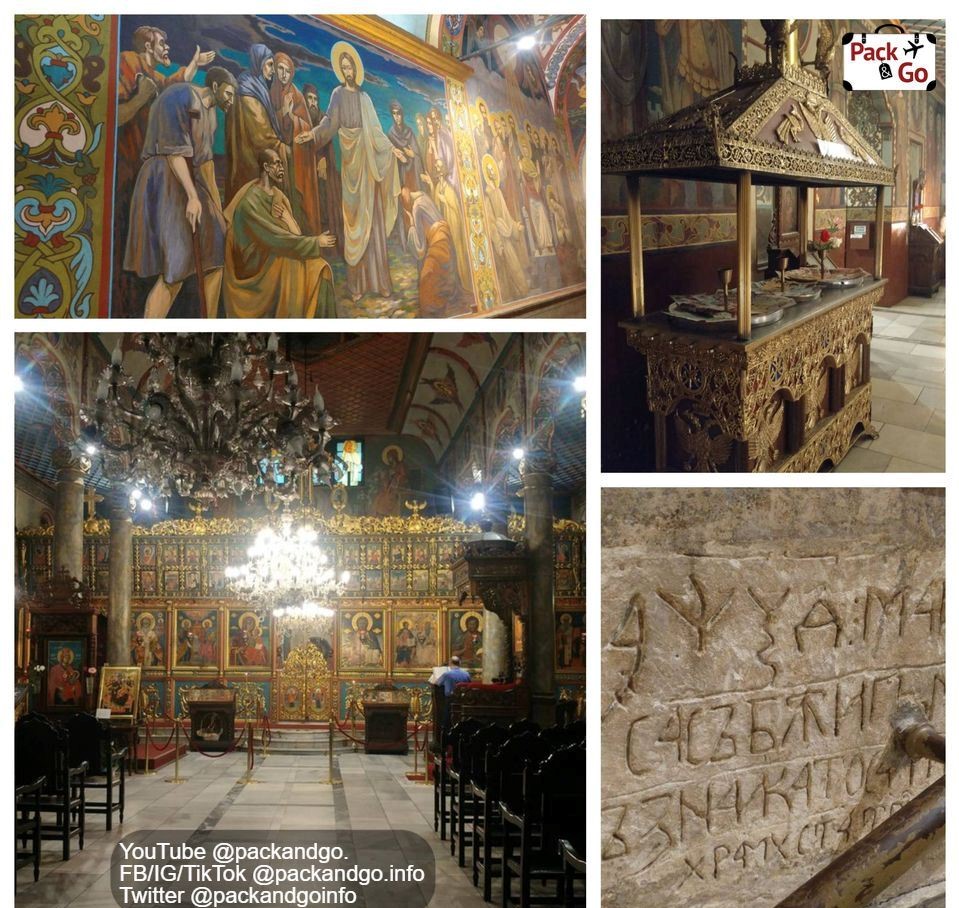
If you are into museums and Bulgarian history you can go and spend some time in one. During this trip, we didn’t visit any, because we preferred to spend time with our friends. Of the museums in Ruse, the most interesting are the National Transport Museum and the Kaliopa Museum of Urban Culture.
What to do in Ruse in the evening?
Eat at a restaurant on the Danube river
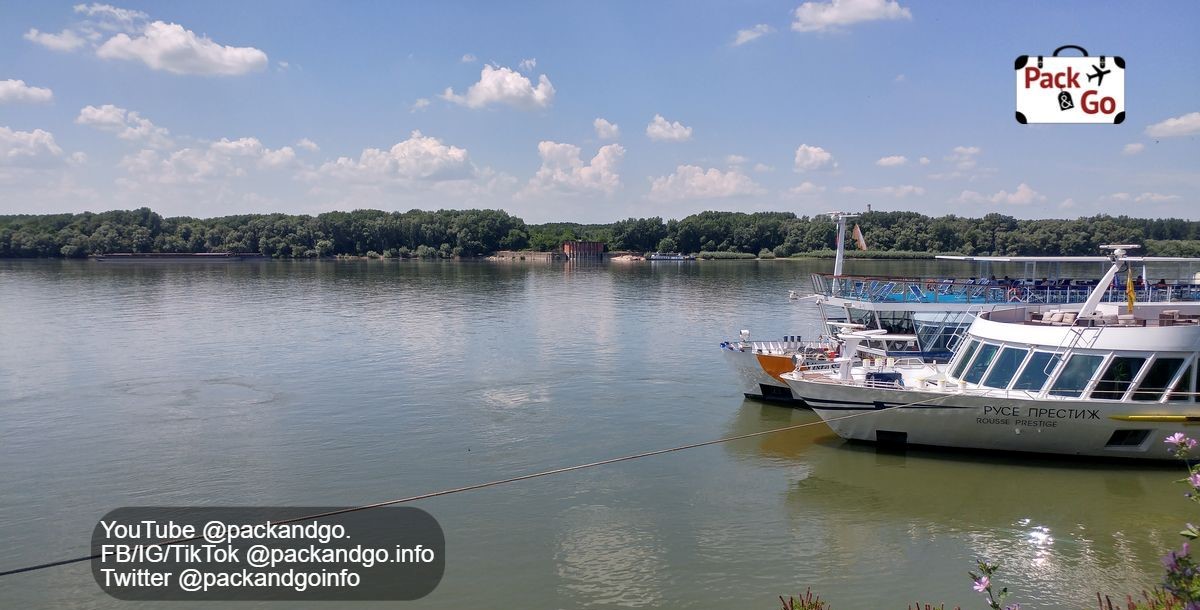
The night is already here and it is time for something more fancy. We walked towards the Pontoon restaurants in Ruse. Why? Because it is a pontoon and you can float on the Danube River while enjoying your dinner. Since we are next to the river, I personally recommend you to try some local combination of fish and chips, but if you are not into fish, there are burgers, pizza, and some traditional Bulgarian dishes too. You can also try some great Bulgarian wines.
Watching how it is getting dark, with the company of G, a nice drink and a view is the best way to say goodbye to a day. Ruse is definitely a wonderful city and very enjoyable to visit.
So, should you visit Ruse if you have just a day to spare?
Yes! You should spend at least a day in Ruse. Its beautiful center and Ruse’s Promenade are both worth it. If you like to travel slowly, you can enjoy this Bulgarian city for a whole week. That way, you can explore its museums, and surroundings without a hurry.
In our case, one day was nice and enough. We enjoyed it very much, we could spend some nice time with friends, and we didn’t get bored even a bit.
We were left with a desire to visit Ruse again in the future. If you got interested in the attractions of Ruse, and what this city can offer, here is how you can visit it.
How to visit Ruse? Different methods to arrive at Ruse.
Arriving by train
You can arrive at Ruse by Train. If you are in Bulgaria, you can use the site of the Bulgaria national railway to check for trains (https://razpisanie.bdz.bg/en). The prices are incredibly affordable, no matter from which city in Bulgaria you are coming.
Going to Ruse by train
-
From Veliko Tarnovo to Ruse by train costs 7.60 BGN (3.88 euros) and takes around 2 hours and a half (direct train).
-
From Varna to Ruse by train costs 12.40 BGN (6.34 euros) and takes around 4 hours (direct train).
-
From Sofia to Ruse by train costs 19.20 BGN (9.80 euros) and takes around 6 hours 20 minutes (direct train).
The prices were updated in June 2023. You can check the site of the ticket provider for the latest prices.
You can also arrive in Ruse from Bucharest (Romania) by train.
It is even easier for the people in Giurgiu, Romania. It takes half an hour to go by train to Ruse.
From abroad with Danube cruiser
You can arrive in Ruse from many different European cities by cruise ship.
-
Vienna
-
Bratislava
-
Budapest
-
Belgrad
-
Novi Sad
-
Vidin
-
and more are connected by the long river Danube.
Ruse is a popular stop on those long Danube cruises.
Arriving in Ruse by bus
There are many busses:
-
Sofia to Ruse bus.
-
Veliko Tarnovo to Ruse bu.
-
Varna to Ruse bus.
-
Silistra to Ruse bus.
-
Bucharest to Ruse bus.
-
Giurgiu to Ruse bus.
And many more buses around. In most cases, you don't need to book in advance. There are many bus lines and it is easy to find a seat. The only reason to book in advance is to get a super cheap seat for 1, 2, or 3 euros if there is a promotion.
Arrive in Ruse by bicycle
You can go to Ruse by cycling too. Ruse is on the longest cycling route in Bulgaria. The route starts in Vidin (read about Vidin), which is located in north-west Bulgaria and Finishes in the north-east in Durankulak near the Romanian border.
Final words
Ruse was the last stop of this long trip. We started with the small Dryanovo and went all the way to Budapest (Hungary). We met old friends and we even made new ones on the way. The 2022 trip finished more than successful, but now it is time to rest. While we are taking a break, you can read about some of the previous travel articles we have.
Check out our previous stops and discover more interesting places in Bulgaria, Romania, and Hungary with packandgo.info.
| Follow PackAndGo.info at: | |
| YouTube | @packandgo. |
| @packandgo.info | |
| X | @packandgoinfo |
| @packandgo.info | |
| Bluesky | @packandgo.bsky.social |
| TikTok | @packandgo.info |
- Details
- Written by: Gianna Esquivel
- Hits: 1858
Transylvania is a very popular destination. If you mention “Transylvania”, most people react like they know, at least something, about it. But when you ask where it is or how things are going there, usually what you get is disbelief or question mark faces. If you push further and ask them to pin it on a map, they don’t know, and they struggle while looking for the name written on it.
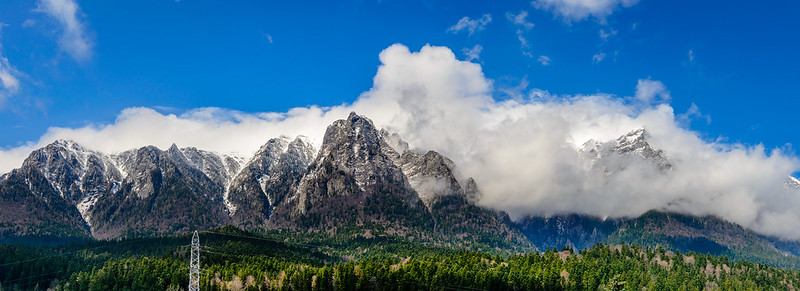
There is too much mystery and tales about Transylvania and people know almost nothing real about it. What we can say is that you should treat yourself to visiting it. Exactly this trip took us around Transylvania and we are enjoying it a lot! There is too much to know, see, and try here. Now we know, we will need several or many trips to explore it kind of completely. We know many people are curious about Transylvania and what to do in Transylvania. If you are one of those, we wrote this for you to have a clearer approach to it. For sure, you will include it in your traveling list and once here, you will experience love at first sight.
Does Transylvania really exist?
Yes, Transylvania exists and it is beautiful! Is this a silly or unnecessary explanation? Not at all! People far away from Romania sometimes express either sharp curiosity or serious doubts about the existence of Transylvania. And it is fiction’s fault. For a long time, writers, TV producers, and filmmakers have created a lot of creepy tales about Transylvania. It is very linked to howling wolves and vampires, specifically Dracula, in people’s heads. If you give a quick check on the Internet, you will find plenty of questions such as “Is Transylvania a country?”, “Is Transylvania a real place?”, some are hilarious, “What money does Transylvania use?” and “What language did vampires speak in Transylvania?”.
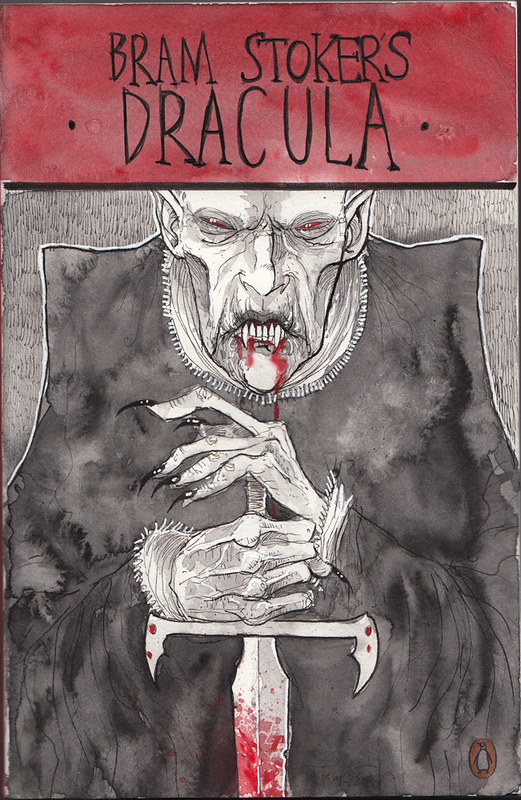
Well, Transylvania truly exists! It is not a country, but a vast geographical region located in Romania. Being Romanian territory, the currency they use is called the leu and the official language is Romanian. That’s it! About vampires, ok, if you are fans of those stories and movies better stop here! Spoiler alert! There are no vampires around. We slept in our tent in the forest so we could have been easy prey for a thirsty vampire while being in such darkness. We were at Dracula’s castle (Bran’s castle) too. And so far no, nothing vampiric happened!
Where is Transylvania?
Transylvania is a region located within the Carpathian arc shaped by a range of big and beautiful mountains across Central-Eastern Europe.
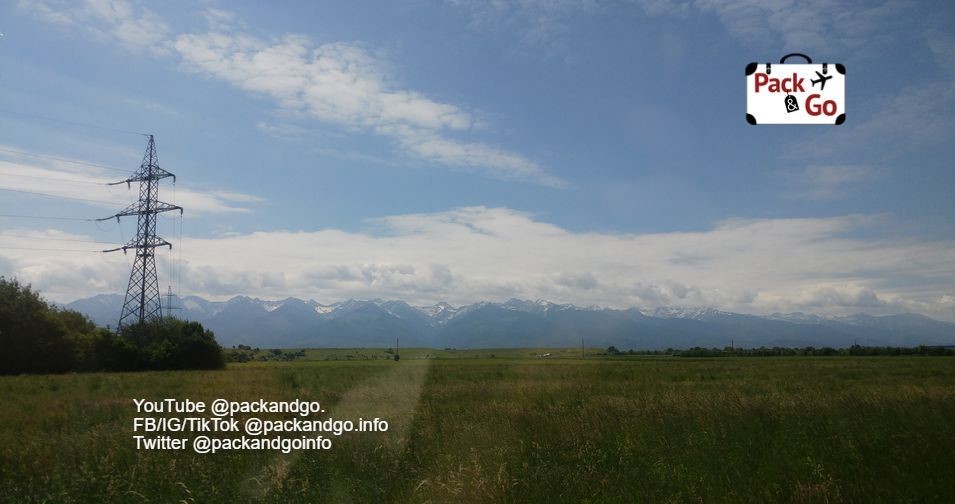
Transylvania’s region is vast. Wait a bit! Let’s make a note here. More precisely, Transylvania was an official region of Romania in the past, but not anymore. For this reason, it is hard to talk about clear borders or the exact area it covers. This is also the reason you don’t find its name in the current maps. History around is very deep and there were many changes through time. Some of the current Romanian counties and cities have been included always in this region because they were part of it since the times it had a prince or governor in charge. Others have been considered part of Transylvania during a certain time.
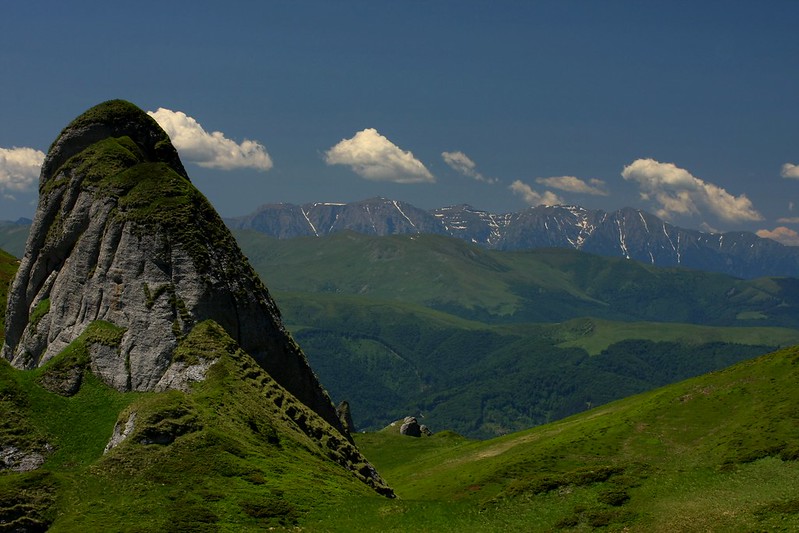
Anyway, take your map of Romania right now! It will be easier to locate Transylvania through the names of its major cities: Timisoara, Oradea, Cluj-Napoca, Sibiu, Brasov, Sighisoara, Alba Lulia, Targu Mures, Baia Mare, and Hunedoara. In some sources, the western half of Crisana, Maramures, and even Banat are included too.
After the positive results for the Allies side in World War I, the Kingdom of Romania got bigger territory, including at that time Banat, Maramures, Crisana, Bucovina, Basarabia, and Transylvania. Later in 1939, Hungary got northern Transylvania. But at the end of World War II, again with the victory of the Allies side, in which Romania fought, that territory got back to Romania.
| Follow PackAndGo.info at: | |
| YouTube | @packandgo. |
| @packandgo.info | |
| X | @packandgoinfo |
| @packandgo.info | |
| Bluesky | @packandgo.bsky.social |
| TikTok | @packandgo.info |
Are Count Dracula and Vlad “The Impaler” the same?
This is another confusing point for many too. If we have to fear one of the two, we fear Vlad Țepeș, "The Impaler"! He was a real and ruthless human. While Dracula was horrifying but fortunately, only a character of fiction. In 1897, Bram Stoker, an Irish, published “Dracula” novel. He chose Transylvania as the location for his character’s tales and then the connection between vampires and Transylvania started.
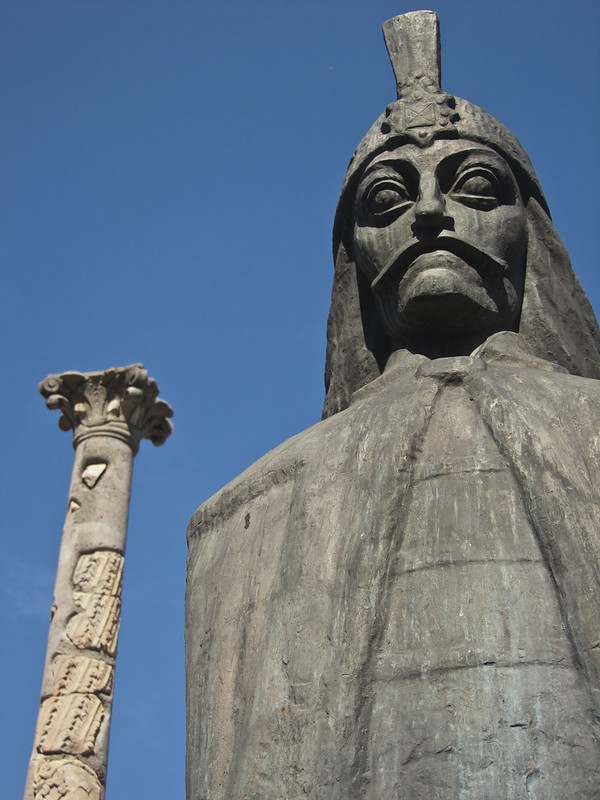
It seems that vampires became popular first in poems, in the early 18th century. Between 1720 and 1730, people got very scared and fascinated with the idea of such characters’ existence. Exhumations took place to analyze suspected vampires, for instance in Serbia, during the Habsburg rule. After poems, other tales were written, some already with an erotic tone, love stories between humans and vampires, ruthless and friendly vampires, etc. The idea of such entities getting back from death and giving that chance to others got a lot of traction in the audience. So Bram Stoker smartly jumped on a popular trend when he wrote his Dracula novel.
The name of Vlad “The Impaler” (Țepeș, in Romanian) was Vlad III Dracula (son of Dracul or son of the dragon). His father was a member of the Order of the Dragon created by Sigismund, a Holy Roman Emperor, to defend Christian Europe against the Ottoman Empire. Vlad III was born in 1431, in Sighisoara, Transylvania (currently, Romania), into a noble family, and he had three brothers. He was the second son. Vlad was a voivode, meaning a prince or military governor of Walachia, during different periods. He became very popular due to his brutality and ruthless methods to punish his enemies, impaling was one of them. He died in 1476.
Different castles and places are linked to Vlad’s life and Dracula’s novel. He lived in the Poenari castle located on Mount Cetatea’s plateau, close to the Fagaras Mountains, on the Arges river valley. He was a prisoner in Corvin castle, also called Hunyadi castle, in Hunedoara, Romania. Ironically, the castle that has been deeply associated with Dracula, the fictional character, Bran castle, called by many Dracula’s castle, in reality, is related at all neither with Vlad III nor with Dracula (character). Bran castle is a good place to visit, but it is very fun to see the big disappointment it produces for tourists because what you can find there is not exactly what Dracula fans expect.
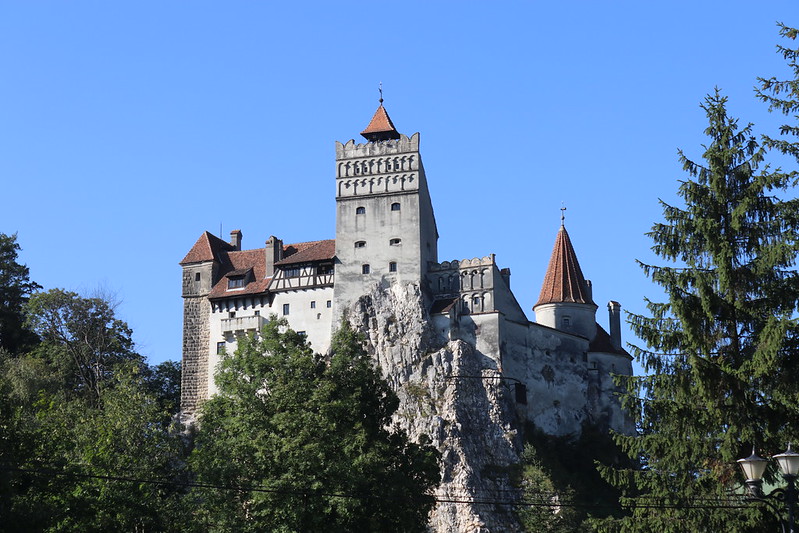
Now, be ready for a very sad fact: Bran Stoker, the creator of Dracula’s novel, never visited Transylvania or Eastern Europe in general. He researched Transylvania in different books (like travel books) and live sources (historians). Then, he let his imagination work. It has been presumed for a long time that Vlad “The Impaler” inspired the creation of Dracula’s fictional character but there is no solid evidence further than some similarities, the castles, brutal nature, and name (Dracula).
Come on! Bran Stoker did not visit the place he wrote about long and deeply. You, dear readers, must visit Transylvania at least once in your life! Why? What to do in Transylvania? Well, that is our next stop.
What to do in Transylvania?
It can take a very long to answer this. Now you know that Transylvania covers a vast Romanian region. That means you can visit at least eight or ten Romanian cities (more if you go with the wide list of cities considered Transylvania). Therefore, each of these cities means a lot of different activities and experiences to do and enjoy in Transylvania. We will give you some general recommendations.
Go hiking
This is a great activity when you think about what to do in Transylvania. As we have told you, the mountains you see while traveling around this region are awesome. The Carpathians, the Apuseni, and the Fagaras are amazing and there are more mountains, smaller, bigger, easier, or harder to explore than others. At least one should suit your taste and physical condition. No matter where in Transylvania exactly you are, you will find trails for hiking, and enjoying beautiful views, fauna, and flora. The mountains in Romania are a massive attraction you should not miss!

Go on a scenic drive
Again nature, the countryside, is involved in this recommendation. Views in Transylvania are awesome and Romanians have something very cool for drivers, the Transfagarasan highway. It is a scenic drive built across the mountains. It is around 150 km in length and its highest point reaches 2,042 m. The Transfagarasan highway is a long serpentine full of astonishing views. Tourism was not the purpose to build this highway. Its construction (1970-1974) was ordered by Nicolae Ceausescu for military purposes. The goal was to create a strategic route through the Fagaras mountains to transport troops in case of a USSR invasion of Romania. Usually is completely open from June to October. Later it is closed due to the snow. When wondering what to do in Transylvania, this can be a good choice.
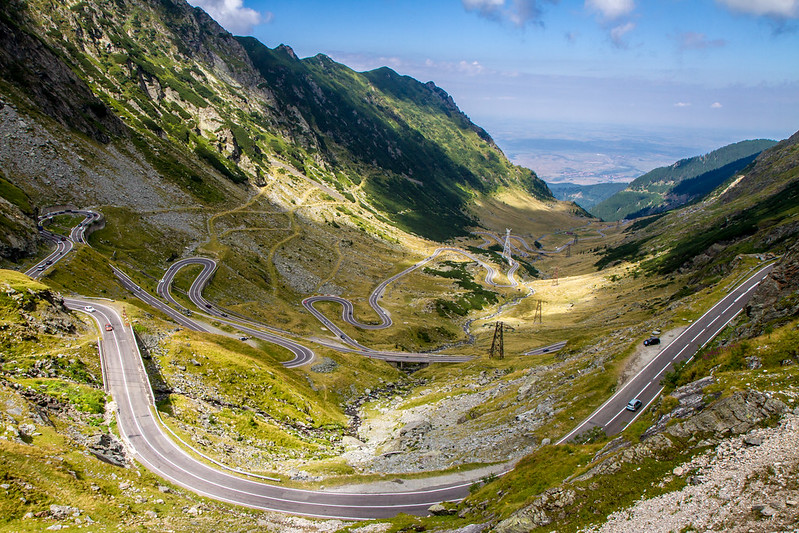
Visit a traditional village
Being already in the countryside, you can visit a traditional village to get a glimpse into rural Romania’s life. Farming practices, crafts, food, and customs are always interesting to explore. Biertan village is a good choice to see old Saxon-style houses, medieval touch, a fortified church built in 1486, the life of a Transylvanian commune, and more. Biertan village is located 30 km east of Mediaș and 81 km north of Sibiu. There is another picturesque village for you only 20 km southeast of Mediaș. Its name is Alma Vii village. You will identify it when you see the cool reddish tiles of the old houses there.
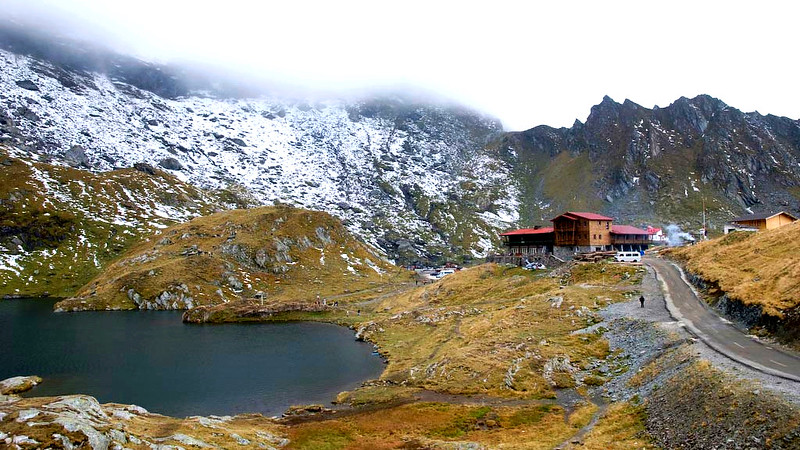
Viscri village is another small and cool settlement you can visit in Transylvania. It is another well-preserved Saxon village that offers you a trip through the Middle Ages’ architectural style, traditions, and life. Viscri village is 43 km southeast of Sighisoara and 80 km northwest of Brasov, based on Google’s calculations.
Peștera and Măgura villages are also alternatives to experiencing Transylvania. They are two cute mountain villages located in Brasov county, at the border of Piatra Craiului National Park. Due to their high altitude, great views of the Piatra Craiului and the Bucegi mountains are guaranteed for you. And the list of traditional villages can go very long!
Another choice to get this approach is the ASTRA Museum located in Sibiu. Ethnology, history, and cultural re-creations are waiting for you. For more details, you can check Sibiu has a secret! Why do its countless eyes constantly watch you?
Explore medieval towns
What to do in Transylvania, well, without a doubt you should visit some medieval towns. It is very interesting to explore such places, their architecture, narrow streets, and current life. Usually, there is a lot to explore in medieval towns (Sibiu, Brasov, Cluj-Napoca, Sighisoara, Timisoara, Oradea, etc.).
Visit castles and fortresses
If you are into castles and fortresses, Transylvania won’t disappoint you! There are many. Some are not advertised as main attractions but they are on the way. They are big structures to admire from an architectural point of view and there is a lot of history and legends around them.
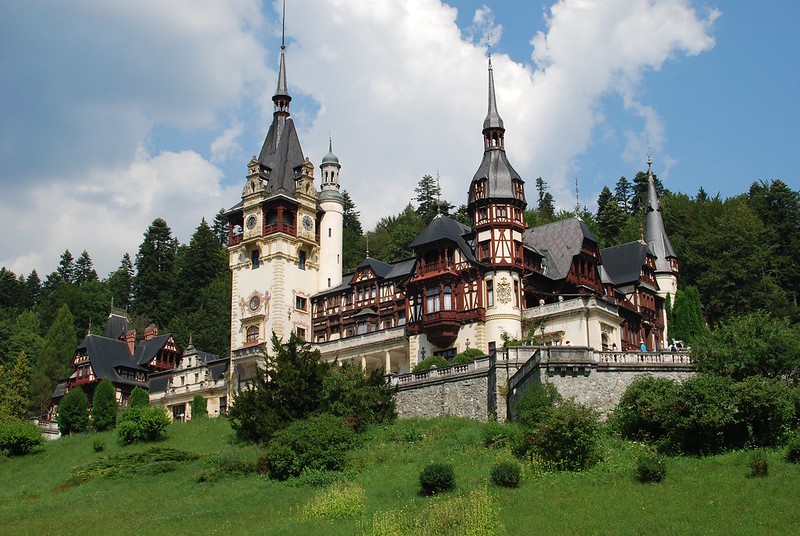
Corvin castle is a popular Gothic architecture representative that waits for you in Hunedoara.
Bran castle is another Gothic architectural building, only 30 km away from Brasov.
Peles castle is a big Neo-Renaissance construction located in Sinaia.
Cantacuzino castle is a neo- Romanian style building located in Bușteni.
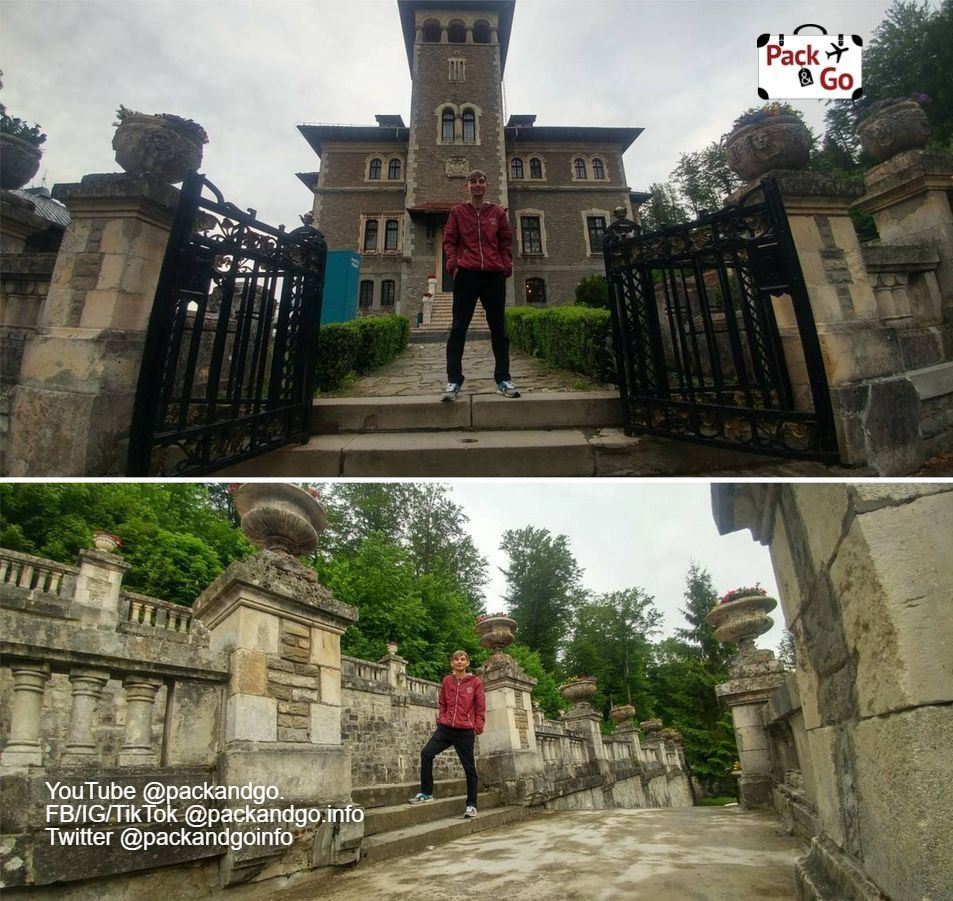
Go on a wine-tasting tour
What to do in Transylvania? Trying wine sounds good for us hahaha. What about you? While traveling in this region, we have seen vineyards, and close to them, usually, you can taste and even take a tour. You can try and see the wine-making process. Such a stop after days of exploring is always a guarantee of joy and relaxation. Write down the idea!
Try traditional food
We were told that we would find different and specific food in Transylvania. Honestly, we enjoyed dishes we have found also in the cities. But something we agree on is that even the popular mici (grilled minced meat), sarmale (cabbage rolls), or palinka (fruity kind of brandy) have a great and more rich seasoning and taste in the countryside. You will find many local restaurants wherever in Transylvania you go to enjoy delicious food.
Attend a festival
Depending on the dates you visit Transylvania, you could catch different festivals (folklore, film, traditional dances, food, music, etc.). It could be a fun way to approach the traditions of the region.
Visit a salt mine
We did not know about this attraction before but yes, some salt mines in Transylvania offer tourists a tour. Walking on a mine is a different experience. You can see the salt deposits and unique formations. Besides, mines, like the Turda Salt Mine, include interesting bonuses like a boat ride on an underground lake. It is a cool experience! Turda Salt Mine is 37 km away from Cluj-Napoca, around a 45-minute drive, based on Google’s calculations.

You can check updated fees and schedules here https://www.salinaturda.eu/en/schedule-and-prices/
Treat yourself to a spa
Transylvania is full of nature, therefore the ideal region to enjoy hot springs, saunas, and massage treatments. Some spas keep the nature spirit so you can relax and rejuvenate in very calm, relaxing hot springs surrounded by beautiful nature.
Conclusion
Now you can have a clearer glimpse and cool ideas about what to do in Transylvania. Its landscape, rich history, and traditions make it a special destination to visit. If you pin on a map some of the places we just recommended, you will see how vast the region is. Therefore, all the possibilities you have while traveling around it. Choose the route or interest (nature, mountains, churches, museums, fortresses, etc.) that better suits you, and don’t hesitate. You can also choose one or two Transylvanian cities as bases to move around. Transylvania is a very cool experience. Just pack and go!
Remember, Transylvania exists and it is a vampire-free destination! You can visit it safely!
If you got in love with Romania, you may be interested in:
Did the violent past leave something worth visiting in Brasov?
Sibiu has a secret! Why do its countless eyes constantly watch you?
Can there be anything worth visiting in Cluj-Napoca?
Oradea, Romania, does this border city suck?
Timisoara, the progressive city that broke the communist chain
Bigar, the once stunning waterfall that is collapsing!
Orsova, Romania, a beautiful discovery kicked off by an error
| Follow PackAndGo.info at: | |
| YouTube | @packandgo. |
| @packandgo.info | |
| X | @packandgoinfo |
| @packandgo.info | |
| Bluesky | @packandgo.bsky.social |
| TikTok | @packandgo.info |
- Details
- Written by: Gianna Esquivel
- Hits: 1124
This trip does not stop, guys! After having a great time in Sibiu, Romania, today we are heading to Brasov. There are places that we like so much that literally, to leave them feels like we need to tear ourselves away from them hahaha. It happens frequently to us. We love that this world still has plenty of beautiful places to visit and make you feel like that. Sibiu was one of those.

There is something very nice about driving in Transylvania, the landscape, the beautiful Carpathians, guys! Mountains are an amazing frame for all the nature around! In the current trip, we have discovered Romania has many big and beautiful natural parks. You can find one almost in every direction you go. By the way, if you don’t know much about Transylvania and where exactly it is, you definitely should read Is Transylvania a real place? Is it still vampire-infested? Find out now!
Where is Brasov?
Take your map. Brasov is in the central part of Romania. We were driving from Sibiu to Brasov, so based on Google calculations, it is around 3 hours of driving. It depends on the route you take, it can be from 142 km (via DN1/E68) to 168 km (via DN1/E68 and DN13/E60). If you are in Bucharest, to reach Brasov, you have to go to the north and it is 183 km, approximately, 3 hours and 46 minutes driving.
We stopped in some places before reaching the center of Brasov. The one we liked the most was Făgăraș. There is a big citadel and a church there and the surroundings were perfect for a break. It is said this citadel and Făgăraș hosted important rulers during the late Middle Ages. The beginning of its construction dates back to 1310. It was built to defend Transylvania from Tatar and Ottoman invasions. It gained greater recognition during Mihai the Brave rule. After, during the Communist time, it was used as a prison.
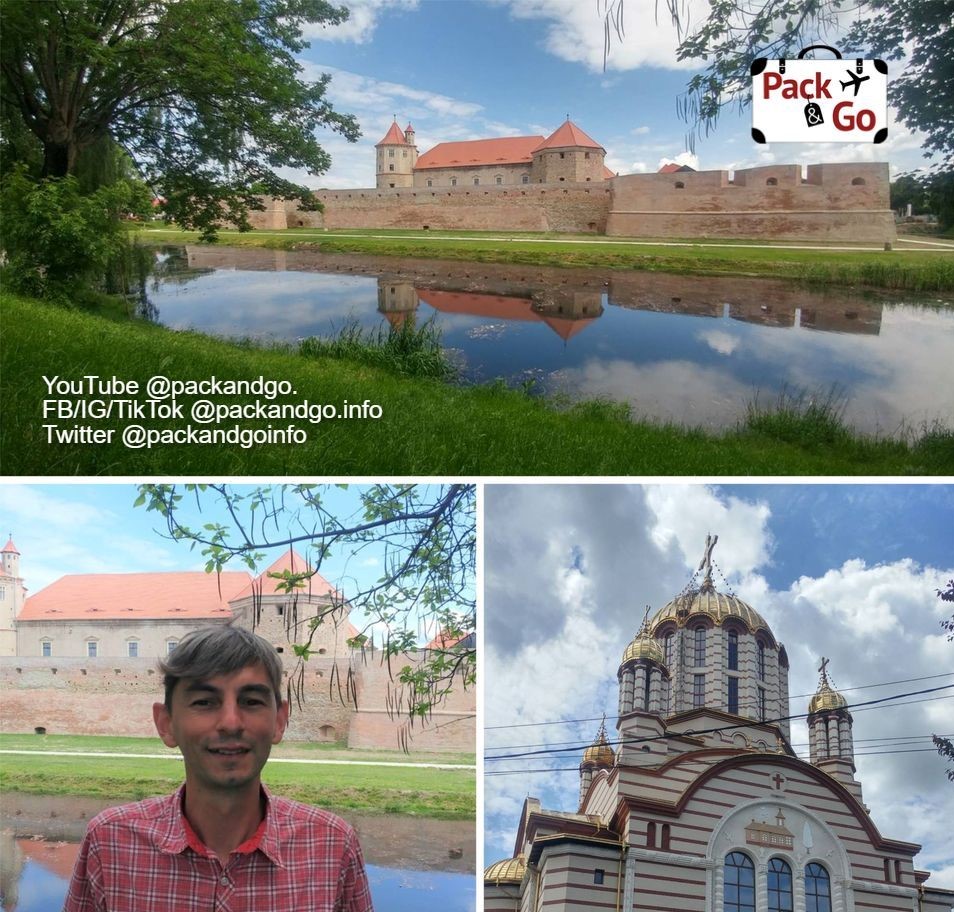
A glimpse of Brasov’s history
Brasov’s foundation goes back to 1211 and Teutonic Knights. It was built by Transylvanian Saxons and it was one of the Siebenbürgen or seven-walled citadels. At that time, Brasov’s name was Kronstadt (Crown City). The other citadels were Bistritz (Bistrita), Klausenburg (Cluj), Mühlbach (Sebes), Mediasch (Medias), Hermannstadt (Sibiu), and Schässburg (Sighisoara).
They were very violent times. Invasions, war, and destruction were constant threats. During the 12th century and onwards, western people (from the current territories of Netherlands, Belgium, Luxembourg, and Germany) arrived in Transylvania to support the work on the land and defend it against different invaders. They were called Transylvanian Saxons.
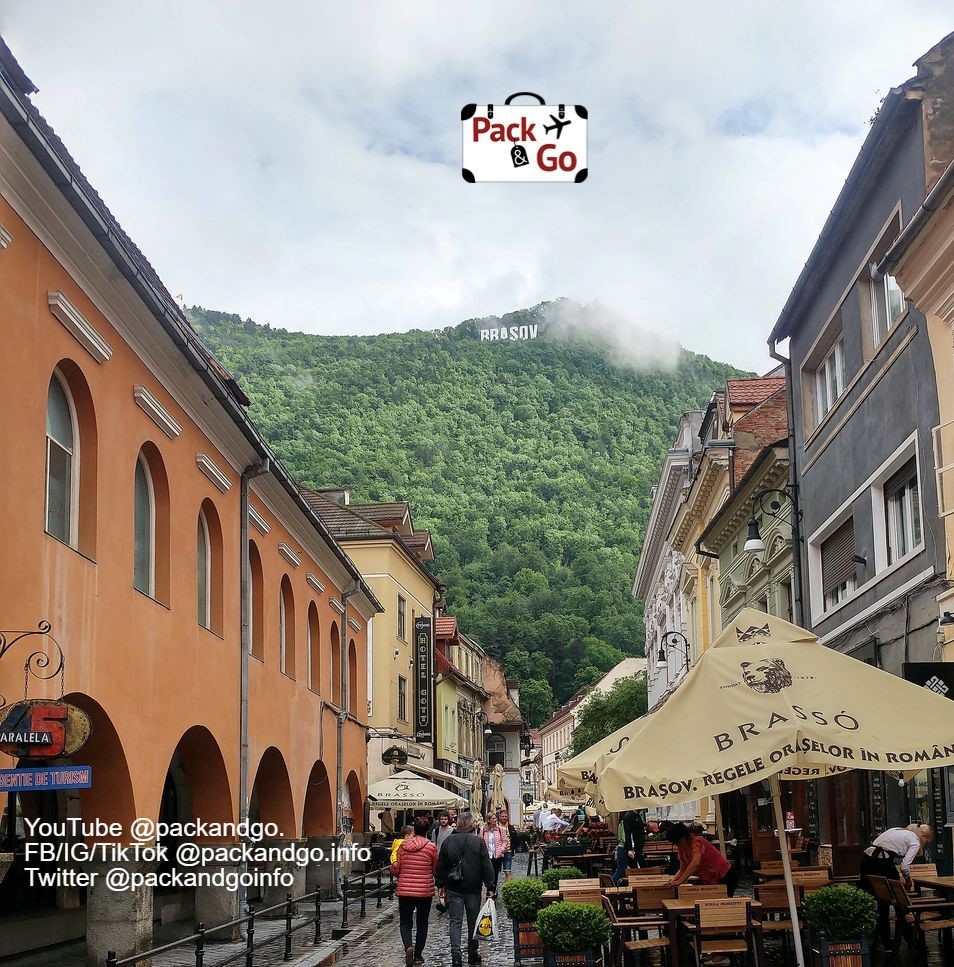
Brasov’s good location, in terms of trade routes between western Europe and the Ottoman Empire, and its friendly tax regime made it possible for Saxon merchants to grow wealth and influence in this region.
Its long history marked Brasov with gothic, baroque, and renaissance signs in its architecture.
What to do in Brasov?
Finally, we arrived in Brasov! It is a very cool city. We stayed here a week and we could stay longer hahaha. But yes, the first question we had once there was, now what to do in Brasov? And the second was, did the violent past leave something worth visiting in Brasov? Here you have what we found and enjoyed the most.
Council Square (Piata Sfatului)
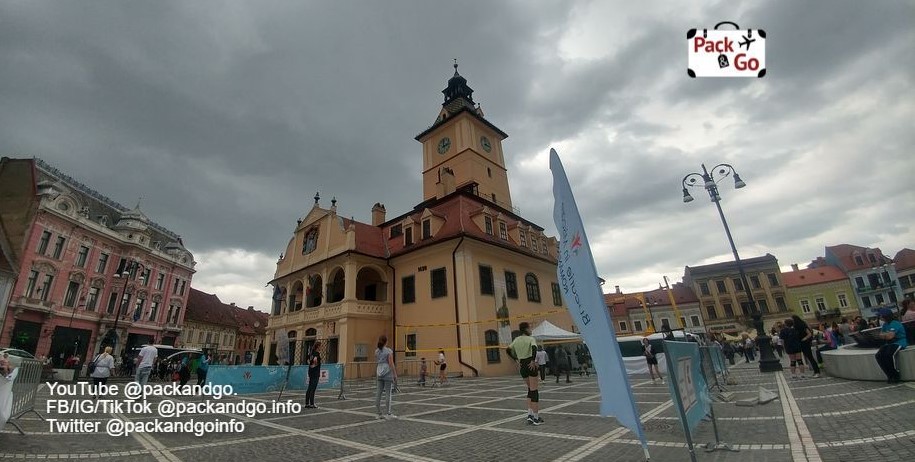
Council Square is the medieval historic center of Brasov. A good choice as to what to visit in Brasov! The square is closed to cars so you can relax and walk calmly there, like the other pedestrians. Admire the old buildings' facades, colorful houses, and Saxon traces, get lost in its old streets and narrow alleys, stop in a café or restaurant for a while, then walk more, and maybe take a seat on a bench to people-watching. There were people, but it was not as crowded as it could be because it frequently houses different cultural events (exhibitions, music concerts, fairs, marketing activations, etc.). It is a place where people naturally gather. It is a meeting point. While people-watching, we saw different couples, young families with kids, and groups of friends getting together around the square. Chatting, walking around, getting pictures, chasing pigeons, and dating, were common activities. Inspiration for people wondering what to do in Brasov.
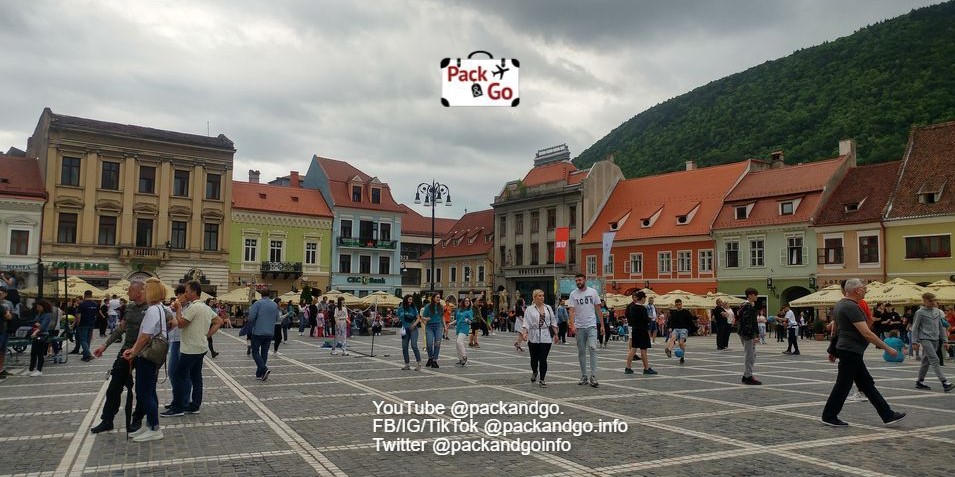
How different things are here (fortunately) currently! In the Middle Ages, exactly this square witnessed a lot of violence. It was used to carry out public trials and bloody executions. Later, during Communism, rules forbade gatherings. Congregating and socializing were seen as risks for the system. Therefore, to avoid such activities and people “plotting”, the square was turned into a parking lot.

This day, we took it easy so we just walked around the center and enjoyed its calm and cool vibe. To be there is a very pleasant experience! We made a mental list of places (monuments and buildings) we got interested in. Later we got back for a deeper exploration.
Tampa mountain (Muntele Tâmpa)
What to do in Brasov, well, once there, one of the first things you will see is a big Hollywood-like notice. It says “Brasov” and it is on the top of Tampa mountain. While walking in the historic center, we saw it from different angles. Later, at night, we saw it glowing (illuminated) from our accommodation. It was a clear sign, a tempting invitation to hike and reach the top of Tampa mountain. So we did!
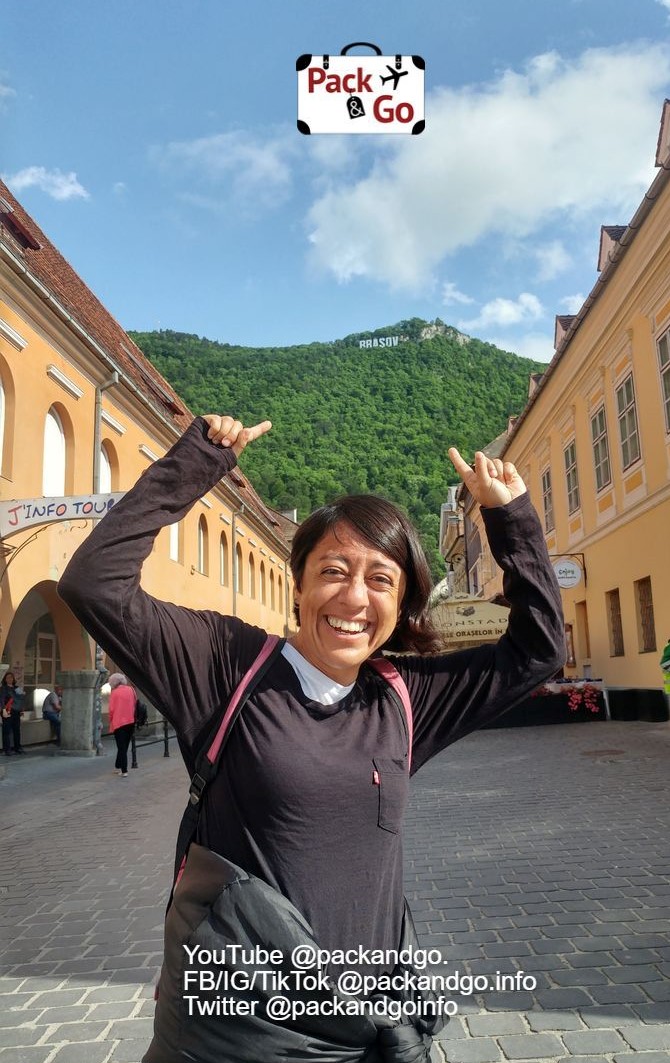
It was a cloudy day, but that helped because, on hotter days, the hiking for sure is harder. The route to climb it is well marked and with signs enough not to fail the mission: reaching the top (Brasov’s notice)! The walk is not the hardest or so physically demanding but this always can be controversial based on everyone’s physical condition. Tampa is approximately, 955-960 m high, 400 m above the city.
We saw many people evading the effort hahaha. They headed directly to the cable car which takes you up in a couple of minutes (official trip duration, 2 minutes and 30 seconds). Seriously, we found only a few people using their feet instead. The fattest were the ones struggling in the steepest parts. Some runners humiliated the rest of us because they were overtaking every hiker by running nimbly hahaha. We are not experts, but honestly, the biggest challenge for us that day was the moody ground. It rained during the night so it was very moody and this combined, in some moments, with loose rocks.

The views of the city from Tampa are awesome! And the mountain itself is very nice. At the time we were there (May), it was very greenish. We were told that in the past, rather than the “Brasov” notice, the top of the mountain housed the original defensive fortress of the city. It was destroyed in 1458, as a result of Vlad Tepes’ attack. Yes, the ruthless “Impaler” burnt the fortress to the ground. And the tale goes darker. Vlad imposed trade restrictions and taxes on trading, especially on Saxon products. Many merchants refused to pay trade taxes and you can imagine what happened to them, right? They were impaled and bloody displayed on top of Tampa mountain.
Our imagination was constantly recreating such ruthless scenes with the beautiful landscape we were enjoying and it was like a crazy, bloody but awesome movie hahaha.
After an hour, we made it to the top! Yeeii! We saw the Brasov’s notice and some seconds later, we got surprised! The awesome viewpoint next to the notice was badly crowded. M and I were like “If we only saw around 10 or 15 people tops, climbing up to here, how is this place crowded?”. More than 60 people were in the viewpoint chaotically trying to take selfies and other pictures and more were arriving. How? They took the cable car.
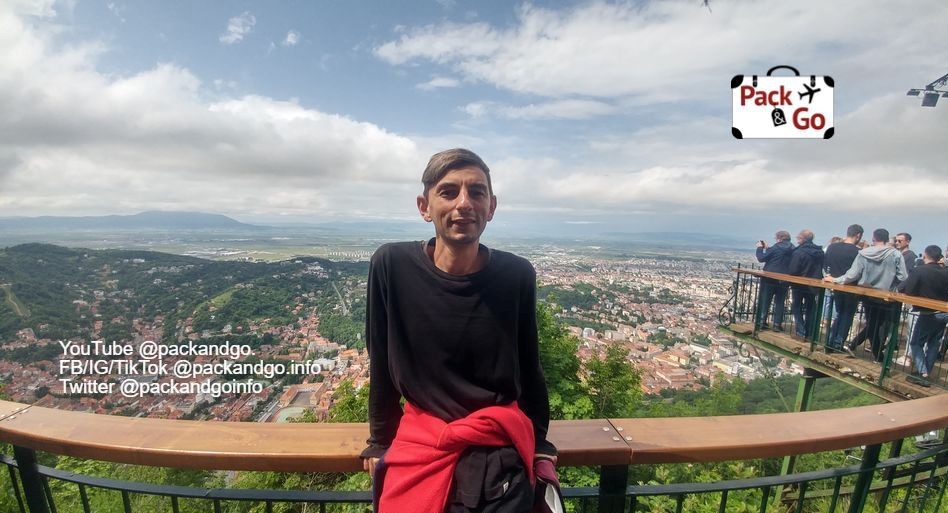
Come on! Seriously? Who the hell prefers to arrive at the top fresh, well-combed, and even in high heels? When you can arrive tired, sweaty, and messy after the effort hahaha. We needed to be patient and fast there to enjoy a bit of the view, without being swallowed by the disorganized crowd. Personal space matters a lot! Besides, these are COVID-19 times, and when people don’t respect boundaries, that can wake up the violent “Impaler” that lives inside us hahaha. We enjoyed this hike very much. And we even avoided finishing the experience by burning everybody to the ground hahaha.
As a reference, we wore regular sneakers, nothing special or specifically for hiking. It took us an hour to reach the top, photo stops and breaks to enjoy the panoramic views included in this time. We took some sandwiches and snacks with us. It was a cool idea because even though the crowd took over the viewpoint (terrace) long time, we still could enjoy a picnic and the fresh air on Tampa’s top. Then, we made it down to the center.
If you want information (price tickets, schedules, conditions, etc.) about the Tampa cable car (telecabina Tâmpa), you can visit https://www.mountlift.com/de-vizitat/telecabine-telegondole-telescaune-romania/telecabina-tampa
The Black Church (Biserica Neagra)
It is one of main Brasov’s landmarks and it is in the center (main square). Its name is linked to a tragedy. In 1689, a terrible fire devastated almost completely the city. The church did not escape it. A large part of it got on fire and even though it was not completely on ashes, the memory of that fire remained on its walls. The church is not originally black or black due to a painting. Its walls got darkened because of the fire’s smoke and that did not change even after a complete century of different restorations. It is considered the largest Gothic church in Eastern Europe. It was built in the same place where an older church was destroyed by Mongols in 1242.
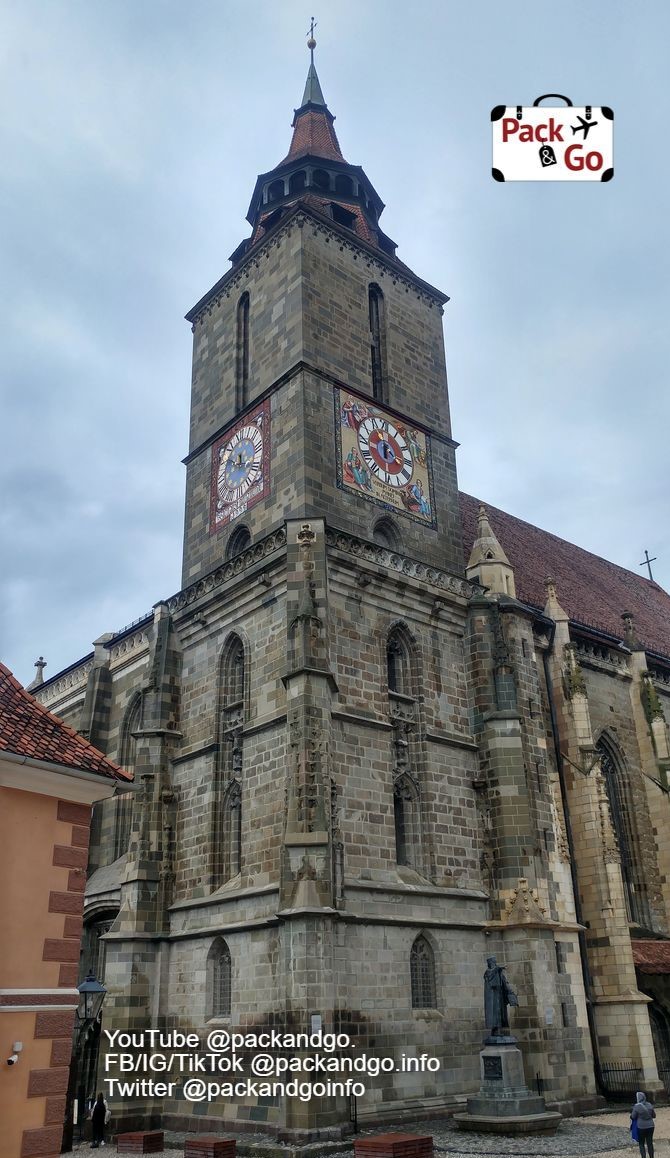
The size, history (its construction took place between 1385 and 1477), and style of the building is impressive. Inside, is not very showy, but you can find a collection of Anatolian carpets, from the 18th and 17th centuries, used as ornaments on the walls. It is a reminiscence of the Ottoman influence in the area. Besides, stone columns, a massive, 4000-pipe organ (1839), stained glass windows, and balconies are there for you to discover them. The bell in the tower is a very heavy thing too, six thousand kg weight.
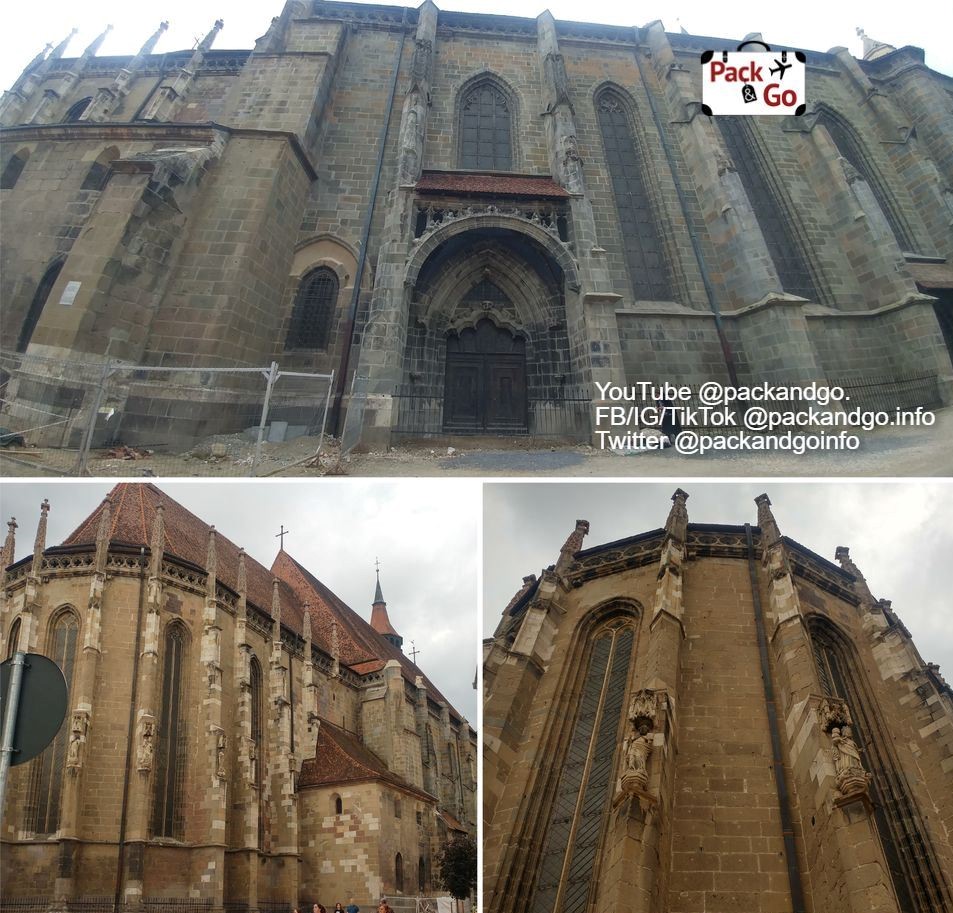
Now you know, what to visit in Brasov: The Black Church! You can have a deeper jump into its history and details about entrance fees, schedules to visit it, etc. here: https://bisericaneagra.ro/en/the-history-of-the-black-church/
https://bisericaneagra.ro/en/program/ (prices schedules etc)
Defensive fortifications
Brasov has different fortifications as a part of its current attractions. They all have a common origin. The Saxons who settled in this area at the beginning of the 12th century suffered countless invasions from Turks, Mongols, and others. Those constant threats pushed them to build fortifications (1400-1650), some of which you can still see nowadays.
Catherine’s Gate (Poarta Ecaterinei)
It was built in 1559 by the guild of tailors, and it was once the main entrance to the medieval Brasov or Kronstadt, as it was called then. Above the entrance, you will see a crown on a tree trunk, the city’s coat of arms.
Black Tower (Turnul Negru)
Yes, more fire, destruction, and darkness, guys! Hahaha. This city was severely hit by fires and attacks during its history. This Black Tower (built in 1494) got its name due to a fire caused by a bolt of lightning struck (1559). There is a museum of war artifacts there, but the best for us was to reach the top to enjoy a panoramic view. The Black Church looks great from here! And it fits easily in the pics!
| Follow PackAndGo.info at: | |
| YouTube | @packandgo. |
| @packandgo.info | |
| X | @packandgoinfo |
| @packandgo.info | |
| Bluesky | @packandgo.bsky.social |
| TikTok | @packandgo.info |
White Tower (Turnul Alb)
Get another cool view of the historic center from here! This tower is on a hill. You can reach it by climbing around two hundred steps. Its construction was completed in 1494.
Graft Bastion (Bastionul Graft)
You can take a break in the first level. The other three offer exhibitions of medieval artifacts.
Beaver’s Bastion (Bastionul țesătorului)
Currently, it is a museum. A well-preserved building that became a venue for music concerts and opera.
Blacksmith’s Bastion (Bastionul Fierarilor)
This old building holds Brasov’s archives. Old and important documents like the oldest letter written in the Romanian language are kept there. This was one of the original seven city’s bastions guarded by guilds.
Schei Gate (Poarta Schei)
The entrance to or from the Schei district. It looks like a triumphal arc. You can see some Latin inscriptions on its structure, dedicated to Francis I, Habsburg Emperor, who visited Brasov in 1817.
Brasov Fortress
The Brasov fortress is located on a strategic hill so it overlooks the city. It was part of the outer system of defense. First, it was built with wood (1524). This material was replaced by stone in the 16th century. It only has an entrance.
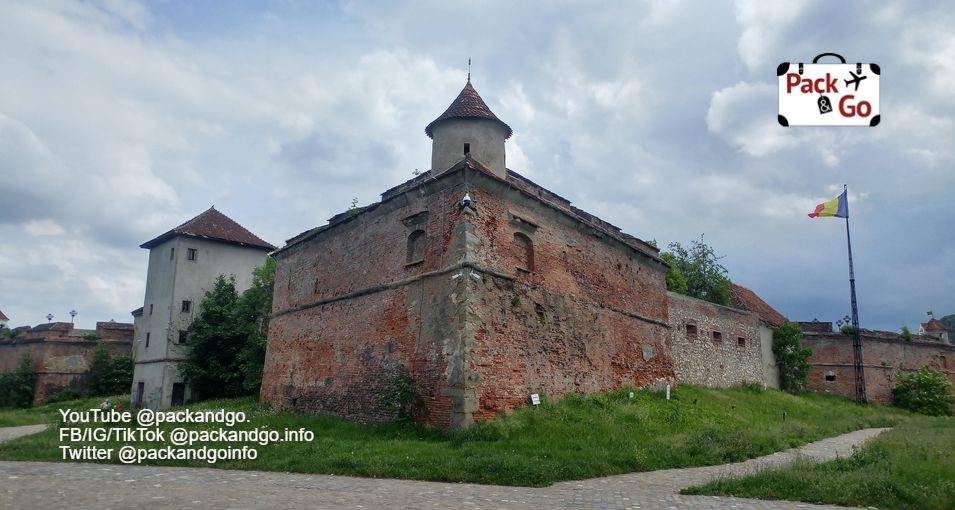
If you have time, visit the fortress. The walk to it and its surroundings is a very pleasant activity and you can see the structure of the building. But if you have limited time here, better skip it. When we visited it (May 2022), it looked poorly maintained and there was no access to the interior. If you decide to go, just walk from the historic center to it. It is not a long distance.

Poiana Brasov
What to do in Brasov, well, this day we felt that we were not exhausted enough so we looked for a challenge hahaha. A very cool Romanian told us about Poiana Brasov. Another hike sounded like the dose of physical effort we needed so we did it! Hahaha. Joking, guys! Honestly, we are not gym people or very sportive. We are just brave hahaha. Our feet should be the parts of our bodies that hate us the most for their constant and hard use.
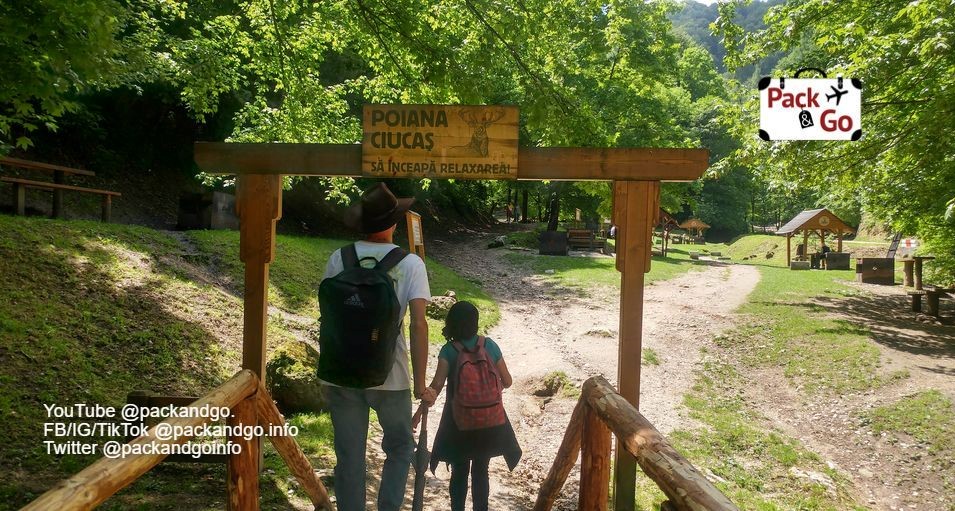
Poiana Brasov is a popular Romanian mountain resort located at the foot of the Postăvaru Massif (part of the Carpathians). A great answer for what to visit in Brasov! It hosts the largest ski area in Romania. The length of the slopes is around 25 km. In Winter, international tourists arrive here to ski, especially many Hungarians, Moldovians, and Ukrainians. In the late Spring and Summer, it is a place where mountain hikers enjoy complete days walking and even a good place to start harder but cool treks into the Carpathian mountains (southern).
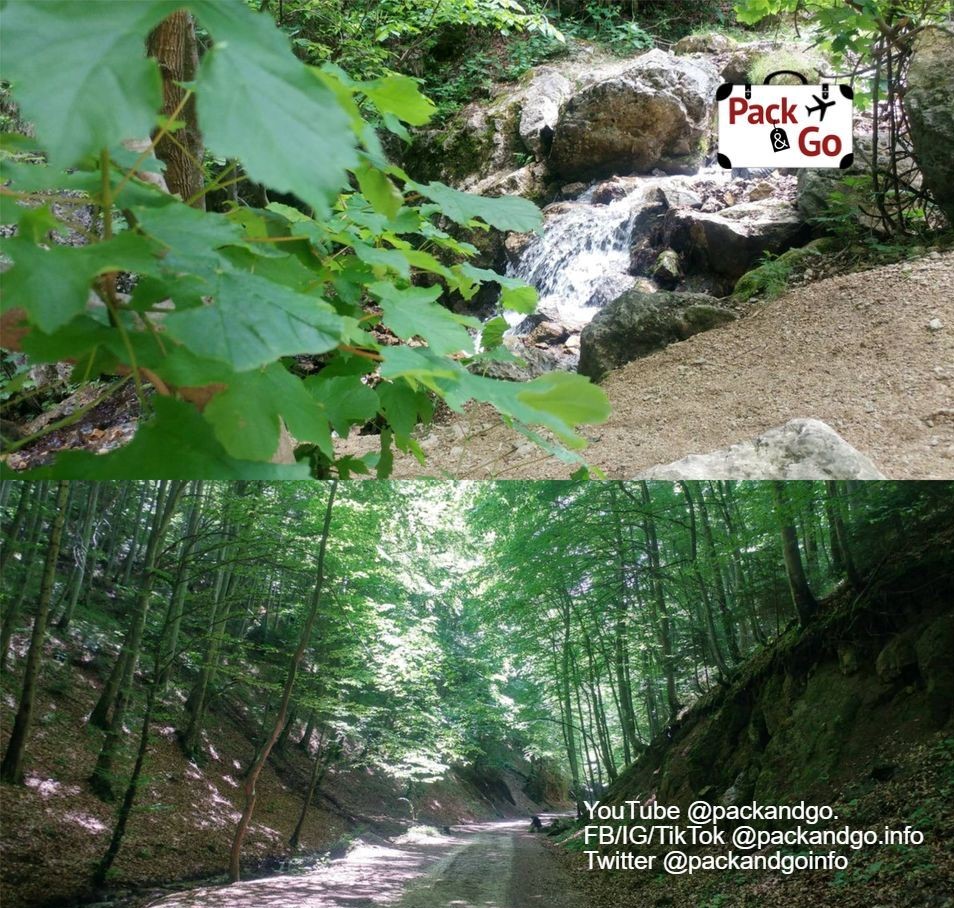
We prepared water, some snacks, the feet, and the will to reach the ski resort by walking on a day forecasted as rainy! Why not? Hahaha, it was awesome! Another dose of nature! The path was well-marked and wide enough. We eventually shared it with some runners and bikers without a problem. On the way to the top, the effort is bigger but it was a very nice walk. We were so comfortable on that wooded path. We were faster every time we heard thunders. We were holding our thumbs for the rain not to catch us! After one hour and a half, we reached the ski resort. It is a very big area full of restaurants, shops, hotels, many sports fields, a lake, and those beautiful high slopes! It was May, and there was no snow, obviously, but the grass was perfectly maintained, like a green, soft carpet.
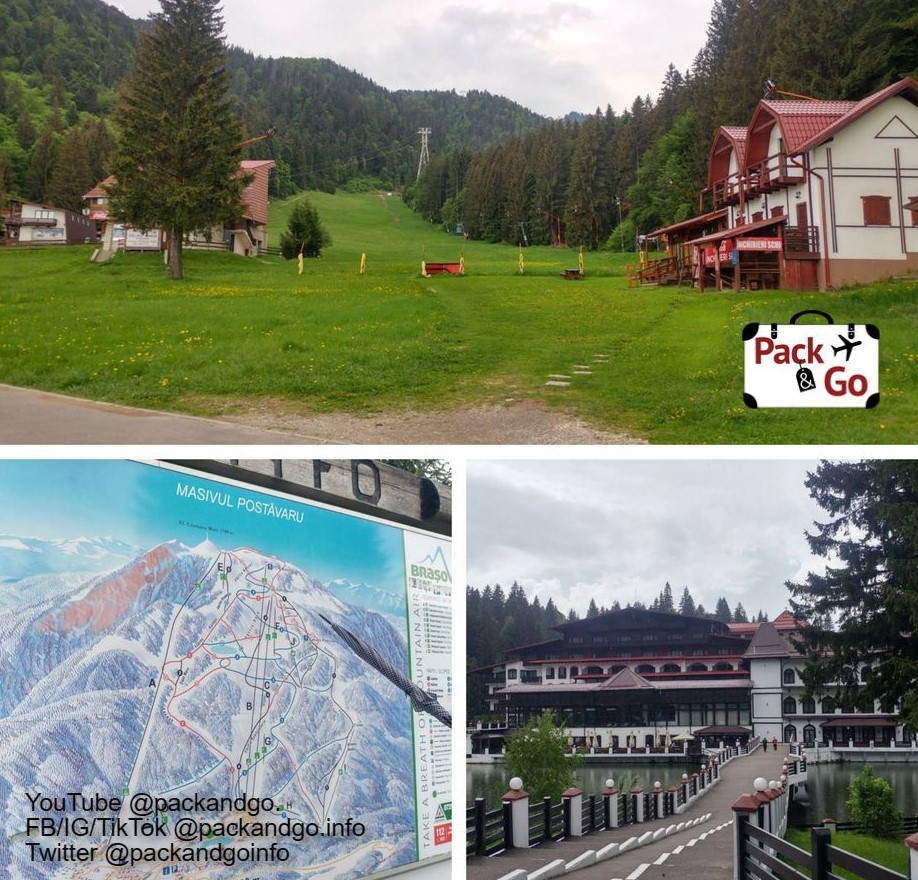
We very much liked this place. Not everything was open. But we had what we wanted, a very pleasant walk in nature, surrounded by green stuff, breathing fresh air, and with the plus of having delicious Romanian ciorbă (soup) and beer. We found only a very few humans around. Travel in the low season has advantages! While eating our ciorbă, the rain started, but we enjoyed it from the interior of the restaurant. And we again held the thumbs for it to stop because we needed to get back. There was an easy choice in front of us, to take the bus to get back. But M and I looked at each other and loudly challenged: “Who is the coward that will take the bus?”. The answer, of course, was “not us”. So we walked down! It took us an hour and the rain spared us, yeees!
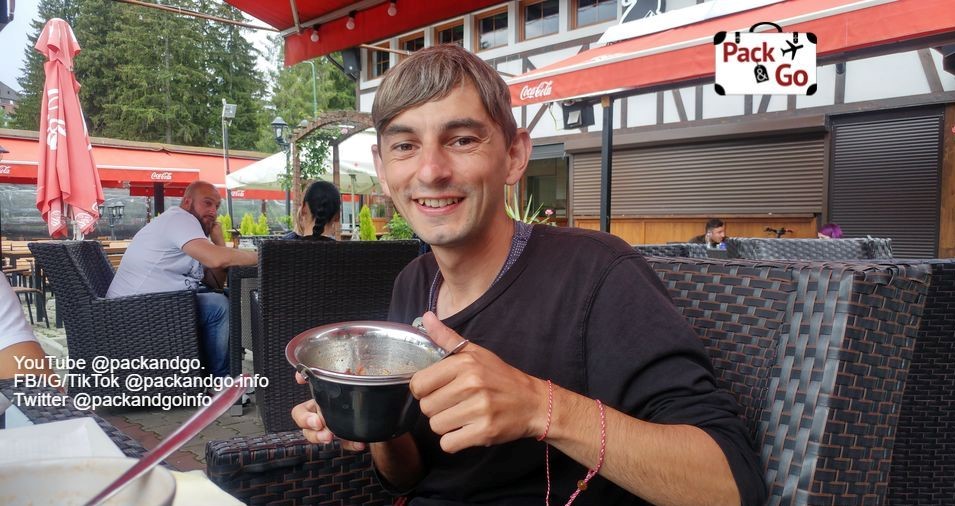
You can reach Poiana Brasov by car or bus. It is, let’s say 10 km, away from Brasov historic center. Around 15 minutes drive or a 30-minute bus ride. You also can take a hiking route as we did and you will enjoy it a lot! We strongly recommend you walk! https://www.discoverpoiana.ro/ro/despre/
Eat and cook delicious Romanian food
Thinking about what to do in Brasov, Romania, a good idea is to eat and drink hahaha. Honestly, when you check a menu, you will find food that maybe you have tried in neighboring countries. Controversy about the origin of traditional dishes and beverages can be eternal. So not today, guys! Hahaha. But even light differences in seasoning, marinating, or pairing the food are much appreciated.
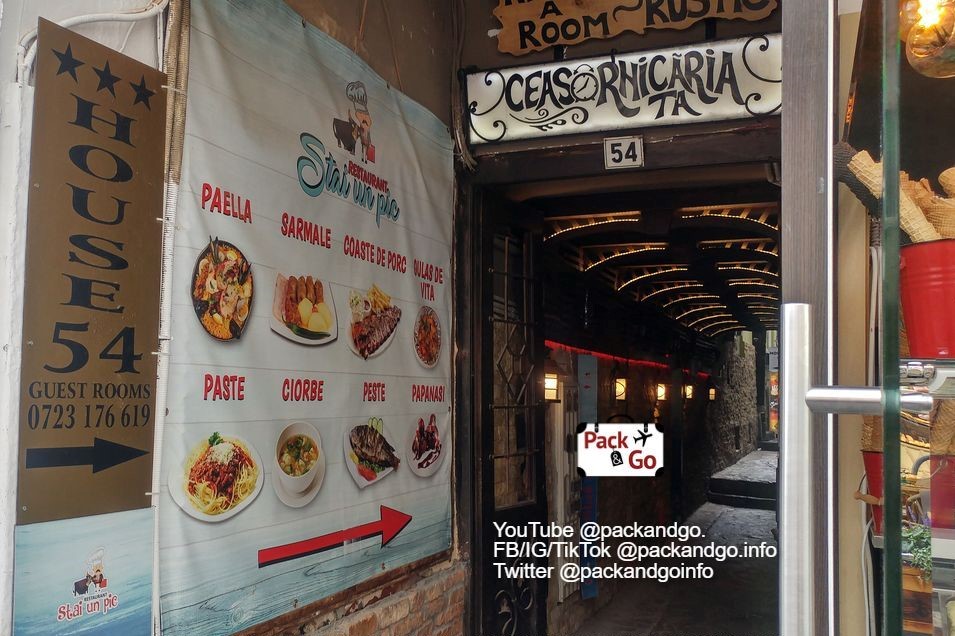
Well, that said, we like very much the Romanian ciorbe (soups). Yes, soups can be found in many places, but wait, when you are in Eastern Europe soups get a richer, heavier, and bigger meaning. Don’t imagine that scarce amount of broth with a few noodles, vegetables, or little pieces of meat floating on it. Those are more the Western types of soup. Soup in Eastern Europe is a generous and delicious dish that can be enough to get satisfied. That is our case. Even though we are solid fans of dessert, there is no chance for us to get a three-course meal after such a soup. But that depends on the size of each person's stomach and how hungry you are.
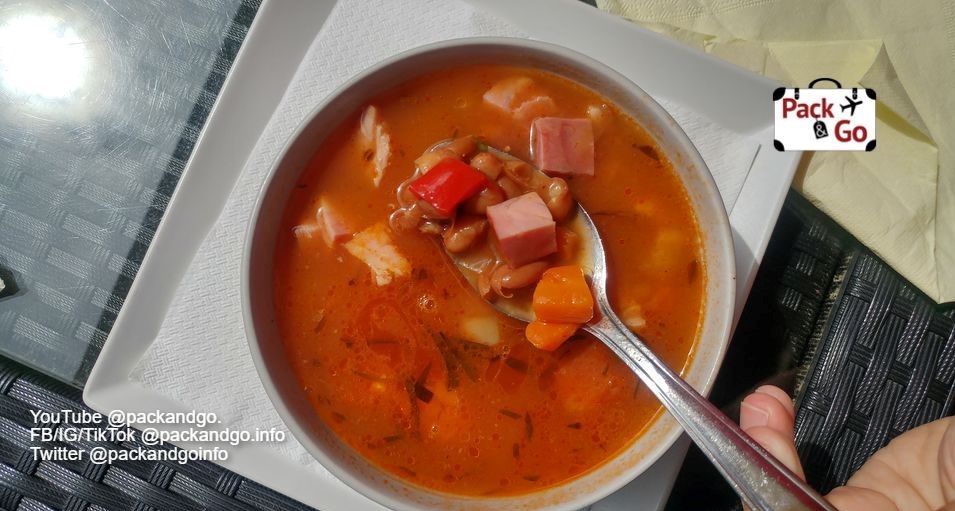
And what is great in Romania is the variety and of course, the taste. Sometimes, you get overwhelmed with all the choices you have in a single menu, but it is great because you can try a different one every day. Some are lighter (more vegetables than meat) than others (a lot of tasty meat, even different types of it at once). Besides, soups, we enjoy a lot the different ways they cook mămăligă (polenta). With all types of meat, sausages, sauces, cheese, etc. Your mămăligă can be as simple or full of stuff as you prefer.
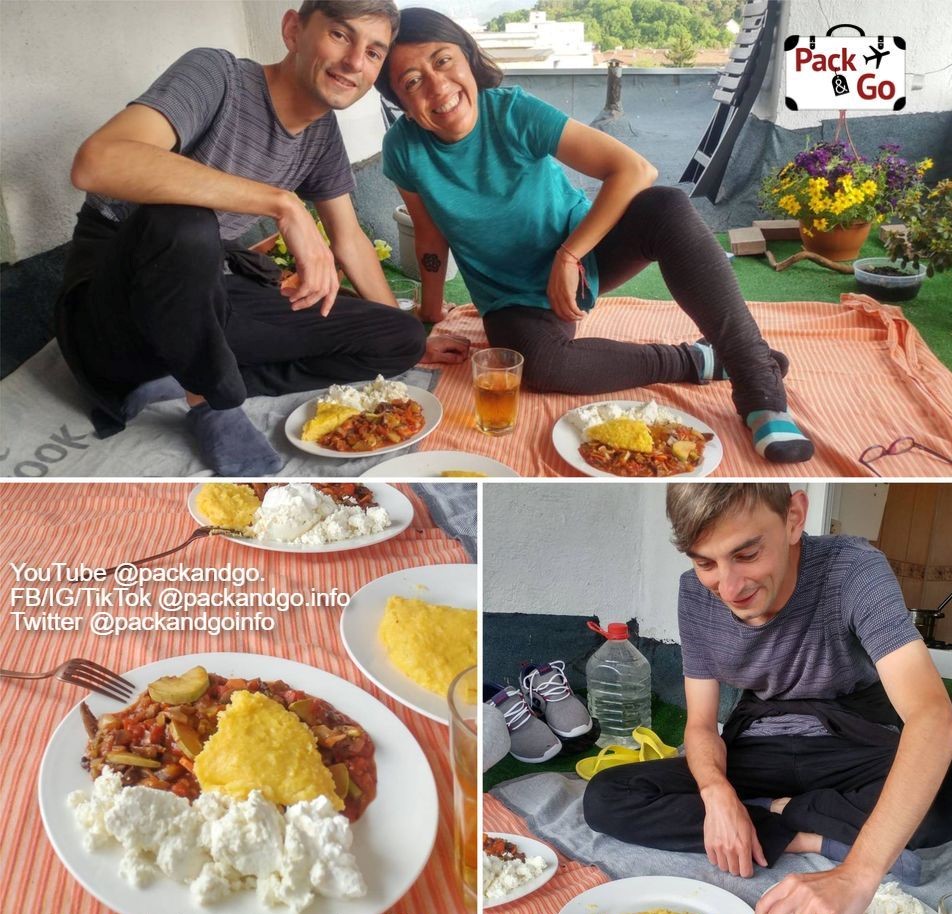
We ate in restaurants but we also tried something very cool thanks to an awesome Romanian friend. We learned how to cook an authentic Romanian-style mămăligă! Wow, that was a very exciting experience from the beginning to the end (when we ate it)! We got the ingredients together, we chat a lot about Romanians and how they live, enjoy, etc. We shared the kitchen, M and I were the apprentices, so we followed our mămăligă Master hahaha and the conversation went long, very interesting, and fun! The Romanian beers, which we very much recommend you, combined very well with cooking and later on, with eating and chatting hahaha. Sharing time and cooking secrets with a local is always amazing. Maybe you know the phrase “The way to the heart is through the stomach” Haha. Well, this Romanian, whom we will call “A”, made us and our bellies the happiest! So yes, he got us!
Imagine how excited we were, that we bought the necessary ingredients to reproduce the recipe at home!
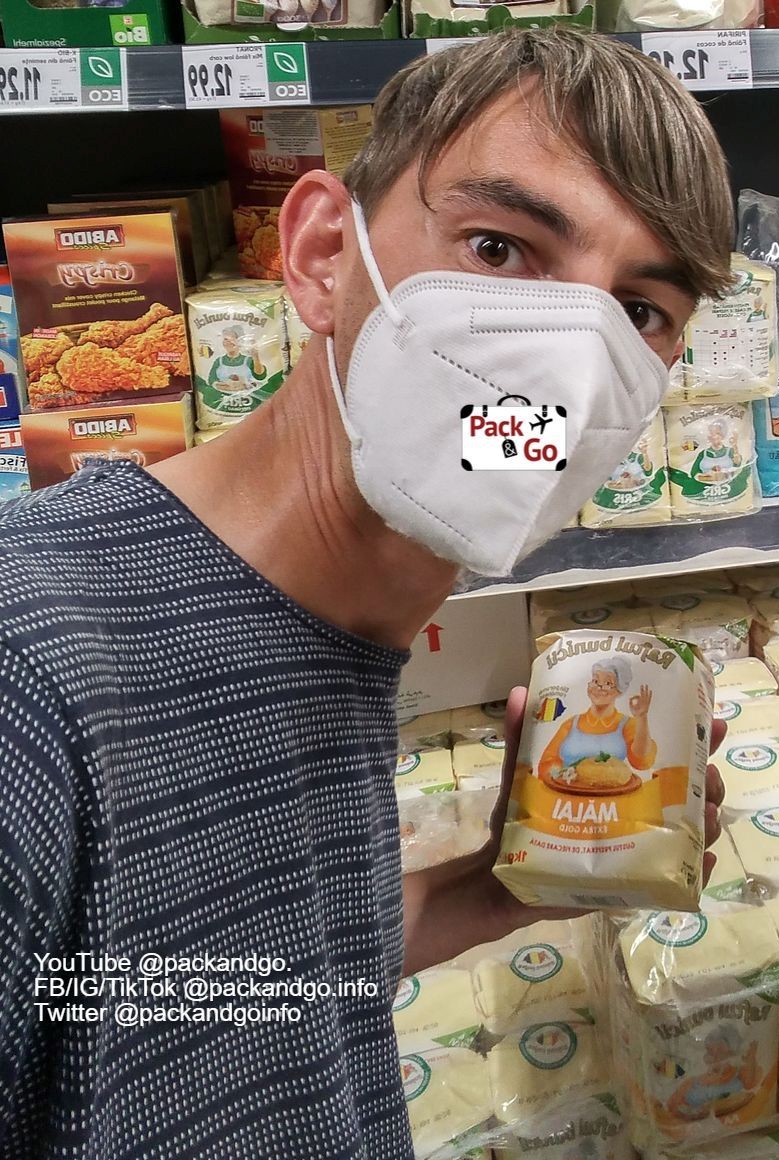
We are super enjoying this trip! We did not travel for two years due to the COVID-19 pandemic. It is awesome to share time with cool local people, especially dear friends from previous travels!
Conclusion
Do you want to visit a Romanian medieval city? Brasov is your best choice! It is a great medieval destination to include in your travels. Its geographical location is privileged. Deciding what to do in Brasov and what to visit there is easy! You can visit museums, churches, and Saxon traditional villages, hiking in nature, and enjoying restaurants, bars, cafés, and bloody violent stories. If you are adventurous and have time, Brasov can be, not only a must-destination but also a perfect base and gateway to explore deeper the awesome Transylvania.
So, did the violent past leave anything worth visiting in Brasov? Fortunately, it did! Despite the fact that invasions, war and destruction were constant in the history of this city, today there is still much to enjoy here.
Another farewell is coming and it feels hard. Brasov has meant great time, cool attractions, a nice-vibe city, and a dear Romanian friend we would not like to leave!
Follow our trip and remember, if you are looking for adventures, you only need to pack and go!
If you like Romania, you may find interesting:
Oradea, Romania, does this border city suck?
Timisoara, the progressive city that broke the communist chain
Bigar, the once stunning waterfall that is collapsing!
Orsova, Romania, a beautiful discovery kicked off by an error
| Follow PackAndGo.info at: | |
| YouTube | @packandgo. |
| @packandgo.info | |
| X | @packandgoinfo |
| @packandgo.info | |
| Bluesky | @packandgo.bsky.social |
| TikTok | @packandgo.info |
- Details
- Written by: Martin Pramatarov
- Hits: 2218
We were coming from Oradea (check Oradea) full of positive vibes. It was quite an enjoyable town, a real surprise. Our next goal was to reach Brasov to see a friend there, but if you know us, we don’t like rushing through a country. We were thinking should we visit Targu Mures and Sighisoara, or Cluj and Sibiu. We took the second option. We went to visit Cluj-Napoca next. Did we choose right? What are the best places to visit in Cluj?
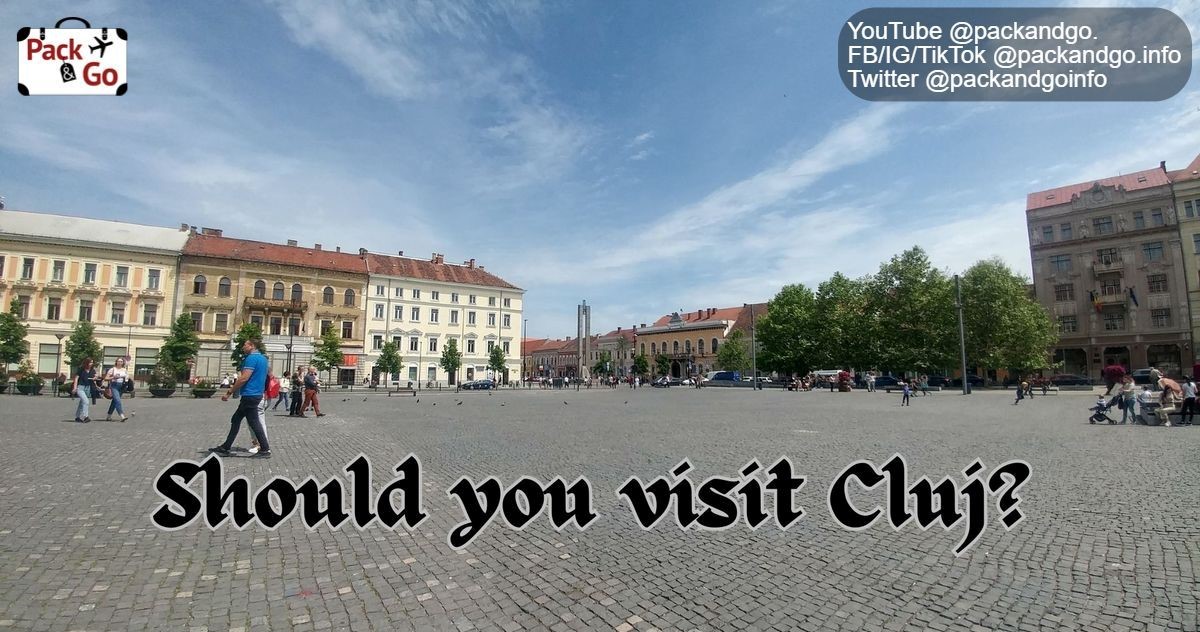
What is Cluj-Napoca?
Cluj-Napoca or just Cluj is the second biggest city in Romania! Don’t imagine a massive megapolis, but it is still a large European city. It has more than 324000 inhabitants. The name Cluj is often connected to the Latin word “clusa” which means closed place.
When it comes to Napoca, it dates back to pre-Roman times. There was a settlement there, and in 106 AD when the Romain conquer this place, they named it Municipium Aelium Hadrianum Napoca. We ask around, and people told us that the name Napoca comes from different Dacian Tribes (Naparis or Napaei) or in Greek “nopos”.
So, Cluj-Napoca can be roughly translated to the close place of the Dacian tribe called Naparis.
But enough with the origin of the Cluj-Napoca name, let’s see if you should visit Cluj-Napoca.
What to do and see in Cluj-Napoca?
Old Town and its Piata Unirii Square
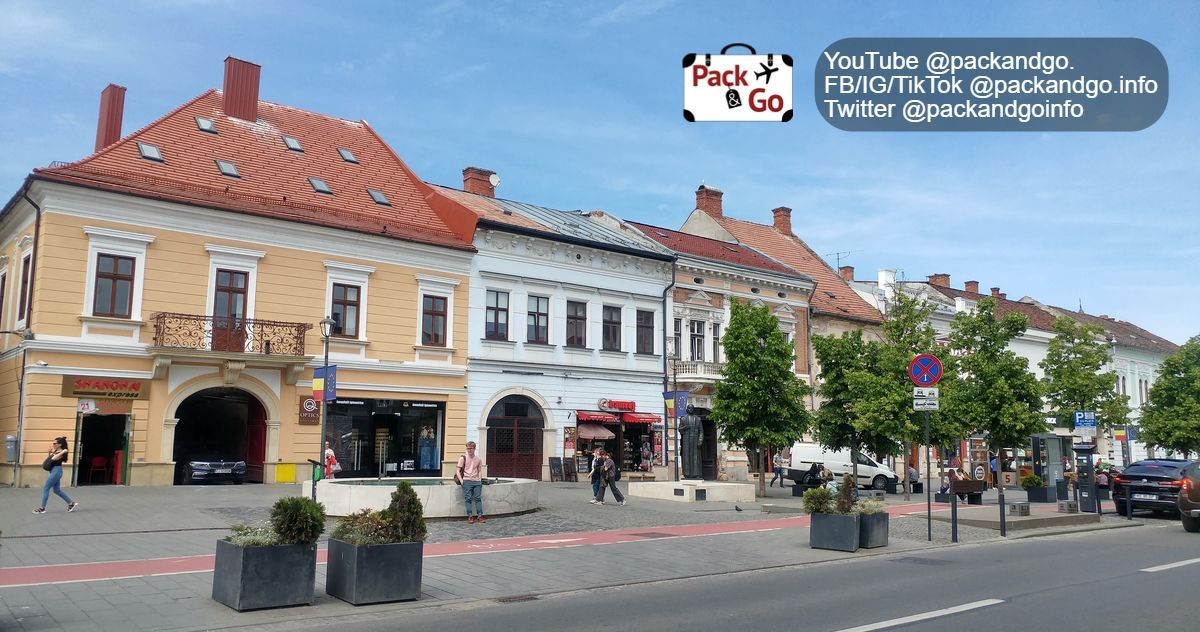
Visiting Cluj’s downtown is inevitable. It is the massive square right at the center of the city. It looks pretty, but it is full of huge old buildings, a very dry environment, a floor of grey bricks, and a few restaurants around. Not bad for first sightseeing here, but somehow the city makes you feel small and distant from the locals. We got a coffee and went to see the massive church in the middle.
Saint Michael’s church

Saint Michael’s Church (Biserica Stantul Mihail) is a supermassive building right in the center of Cluj-Napoca. It is the second biggest in the whole of Romania, only behind the Biserica Neagra of Brasov.
It is a medieval Romanian Catholic church that was built around 1442-1447. It has a very Gothic look and a very cool element is the 3 coats of arms of the King of Hungary, King of Bohemia, and Sigismund. You know, because John Hunyadi was the ruler of the 3.
Since it is really huge (70-80m), there is no easy angle to see the whole of it, but you can still enjoy its look from a restaurant on the square or enter and see the massive structure from within.
The statue of Matthias Corvinus
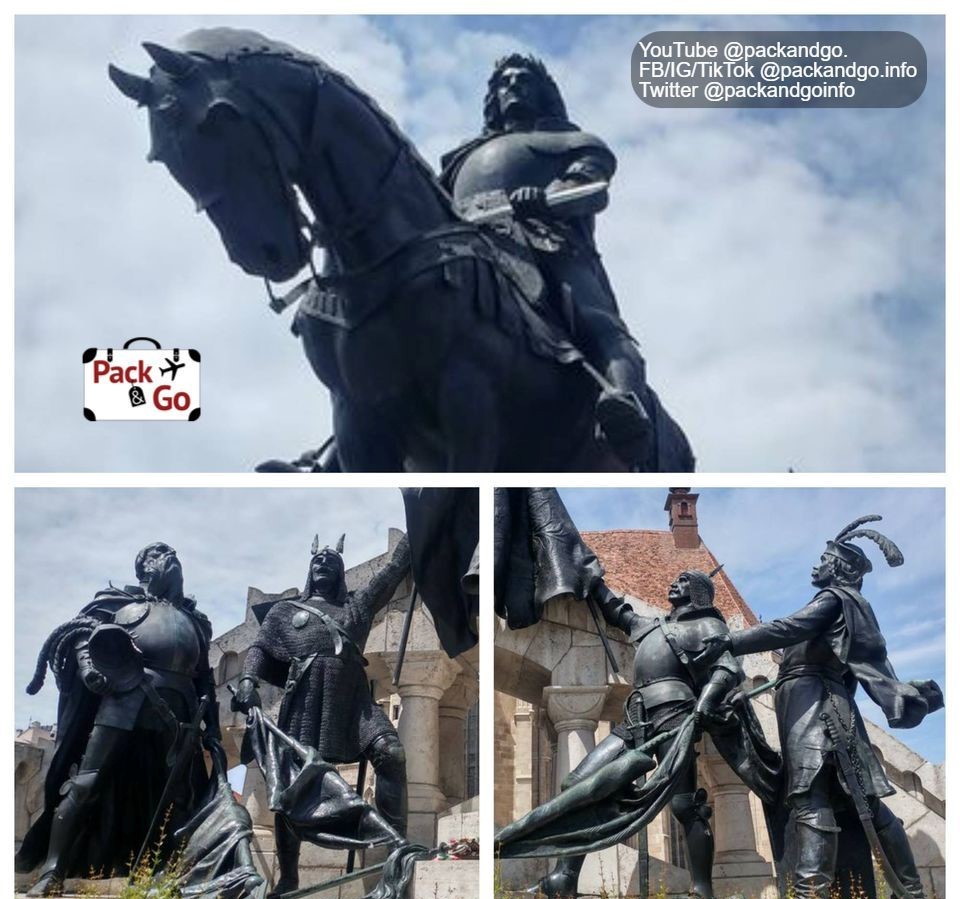
And outside of the church, you will see the proud monument of Matthias Corvinus (Matthias Rex).
It is the local “guy on a horse”. You for sure know how most tourist places around the world have one guy on the horse right in the center. Cluj is no exception. The statue of Matthias Corvinus is quite massive and well-made. It is a huge knight with great body armor and he is accompanied by a few more knights.
But who was Matthias Corvinus?
He was the king of both Hungary and Croatia from 1458 to 1490. He also collected multiple titles during his military campaigns like the king of Bohemia, and Duke of Austria. If you are imagining the map of Europe, you can say that Mattias Corvinus had at least one-fifth of the whole of Europe!
The monument stands in Cluj-Napoca because Matthias Corvinus was born exactly here during some of the hardest times in Europe’s history. Can you imagine, fighting with the Roman Empire on one side, with the Ottomans on the other, and that your closest neighbor was Vlad Dracula, the Prince of Wallachia and ruler of Transylvania? And you are complaining about your neighbors making noise after 10 pm!
Romanian history is very intriguing. Very dramatic and full of treacheries and scandals. But Let’s not get carried away here. Visit some of the Historical museums in Romania or Hungary and you will see what I mean.
By the way, if you continue reading this article, you will learn about which was the castle, where Vlad the Impaler (Dracula) was imprisoned, so keep reading.
| Follow PackAndGo.info at: | |
| YouTube | @packandgo. |
| @packandgo.info | |
| X | @packandgoinfo |
| @packandgo.info | |
| Bluesky | @packandgo.bsky.social |
| TikTok | @packandgo.info |
Walking on the street of Cluj-Napoca
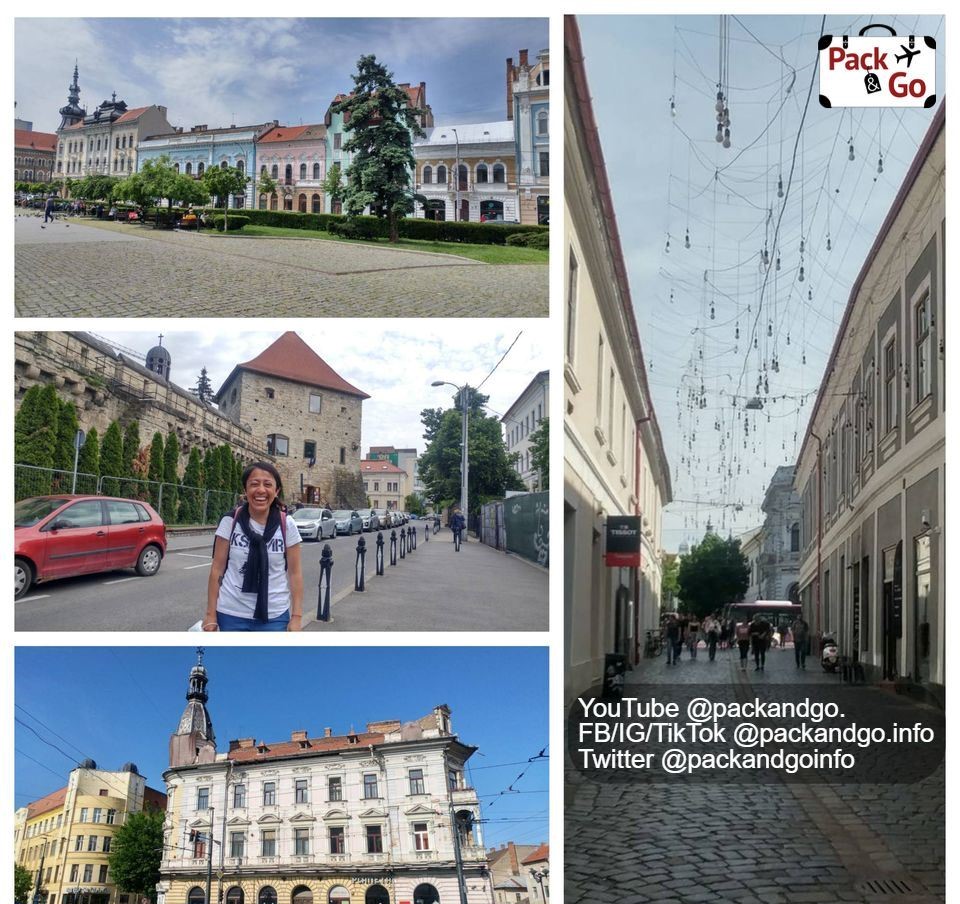
The streets are beautiful, full of massive old buildings, but they are not the best for pedestrians. The part for people is tiny, in comparison to the road for cars. That makes it a bit uncomfortable for visitors. What I missed here was having more restaurants and coffee shops with a table outside. Don't get me wrong, there are some, just when you compare it with the size of the city, I think they are not enough.
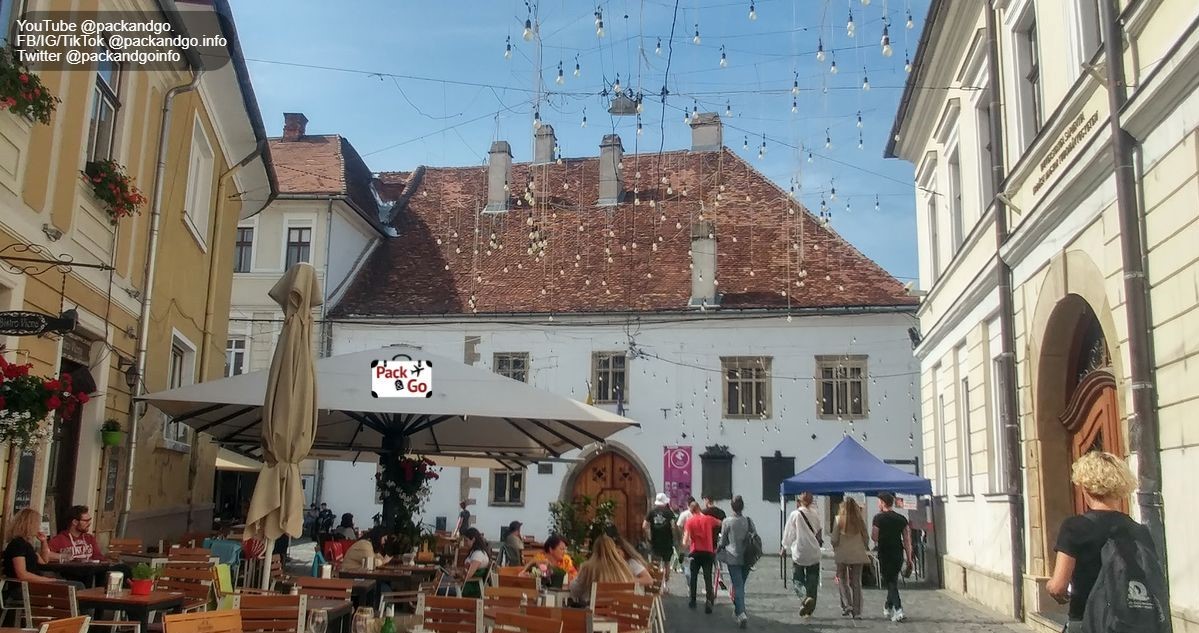
Yes, the Museum Square (Piaţă Muzeului) was a nice break that we enjoy but it is quite a small place. And during the tourist season, it gets truly crowded.
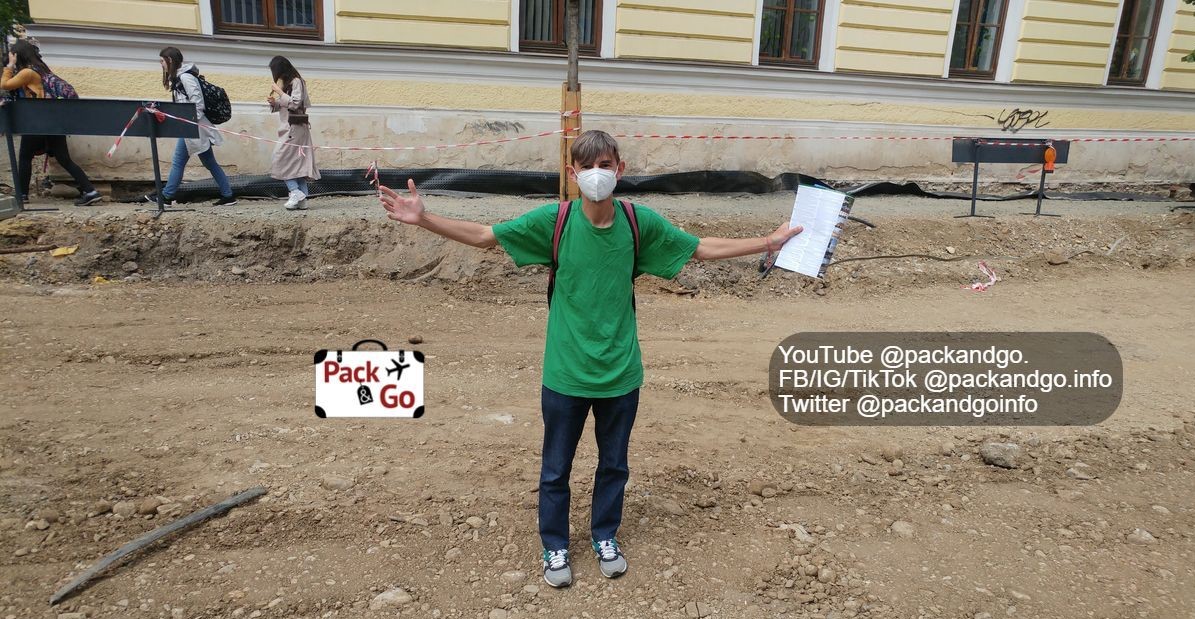
We visit Cluj in 2022 and every important street was in renovation. It is annoying when you hear noises from repair jobs around every corner and half of the places are currently closed.

I missed the tourist part with all the souvenirs and cool places for small breaks. We came here from Oradea (read about Oradea), and even though it was smaller, it had that touristic vibe that grabs you and puts a smile on your face. In Cluj, I just didn’t feel it. I know many Romanians from Cluj will be mad at me, but if you are visiting this part of Romania, spend less time here and more in Sibiu or Brasov.
Central Park (Parcul Central)
If you are searching for a nice place for a picnic, there is no better than Central Park. We can’t miss it when talking about the best places to visit in Cluj. It is a really nice peaceful with a lot of greenery and water. It is like a city escape from all the noise around. You can see many people coming here to read a book, chat with friends or just do some exercises.
There is a nice pond, where you can rent a pedal boat and enjoy the freshness of the park.
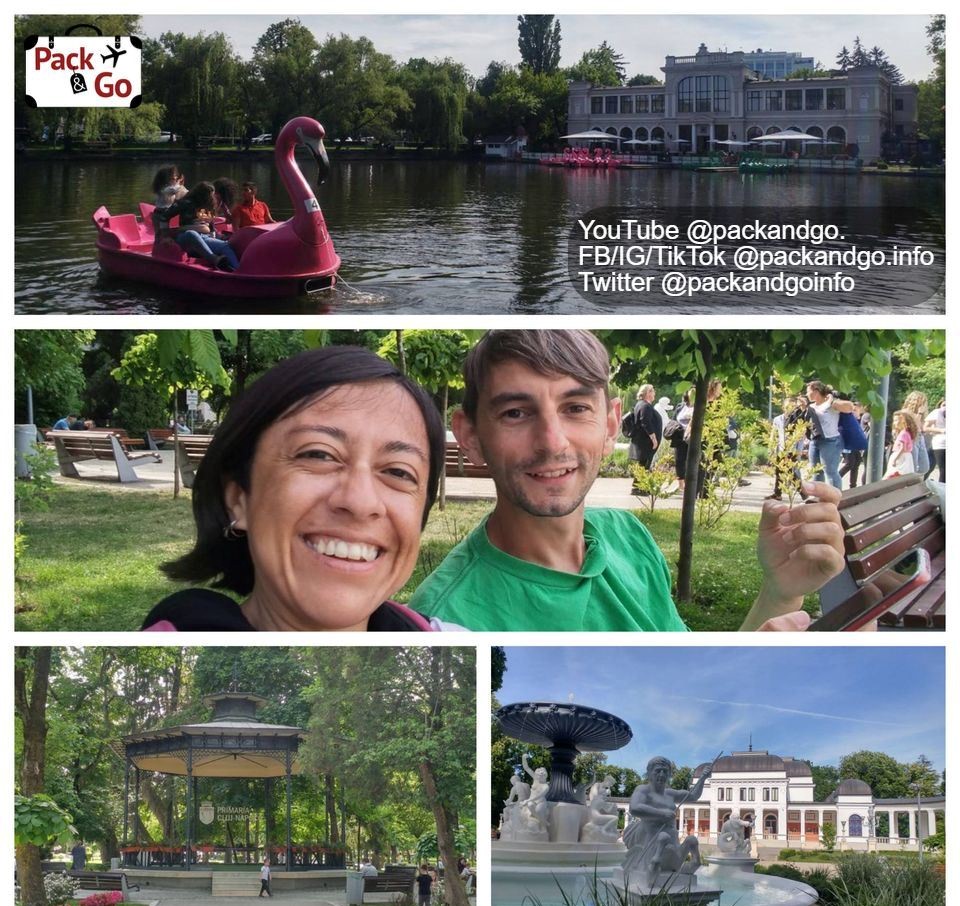
If you get hungry and you didn’t bring anything, you can head up to Chios Social Lounge. It is located on an artificial island in the pond. Enjoy the view from there and something nice for your belly at the same time.
Fortress Park (Cetatuia Park)
The Cetatuia Park is located right on the other side of the Somesul Mic channel. It is not so well decorated or full of life as Central Park, but there is one really good reason to go there – to see Cluj-Napoca from higher ground.
Yes, people love to climb the hill to get to the viewpoint and enjoy the scenery.
And do some exercise too. There are quite a lot of stairs that you need to climb to get to the top.
It used to be a part of the defense of the city. There was a fortress on the hill, but now there is a hotel and not much more.
It is not one of the top places to visit in Cluj, but if you have an extra day, you will most probably like it.
The Dormition of the Theotokos Cathedral (Catedrala Adormirea Maicii Domnului)
It is a relatively new church. It was finished in 1933. Yes, it is almost 100 years old, but we are talking about a medieval city here. Many of the buildings are 500 years old.
What is interesting about it is its architecture. It is built with Romanian Brâncovenesc style, which is a strange mix of Renaissance and Byzantine architecture. To make it even weirder, the dome designer took inspiration from Hagia Sophia in Istanbul.
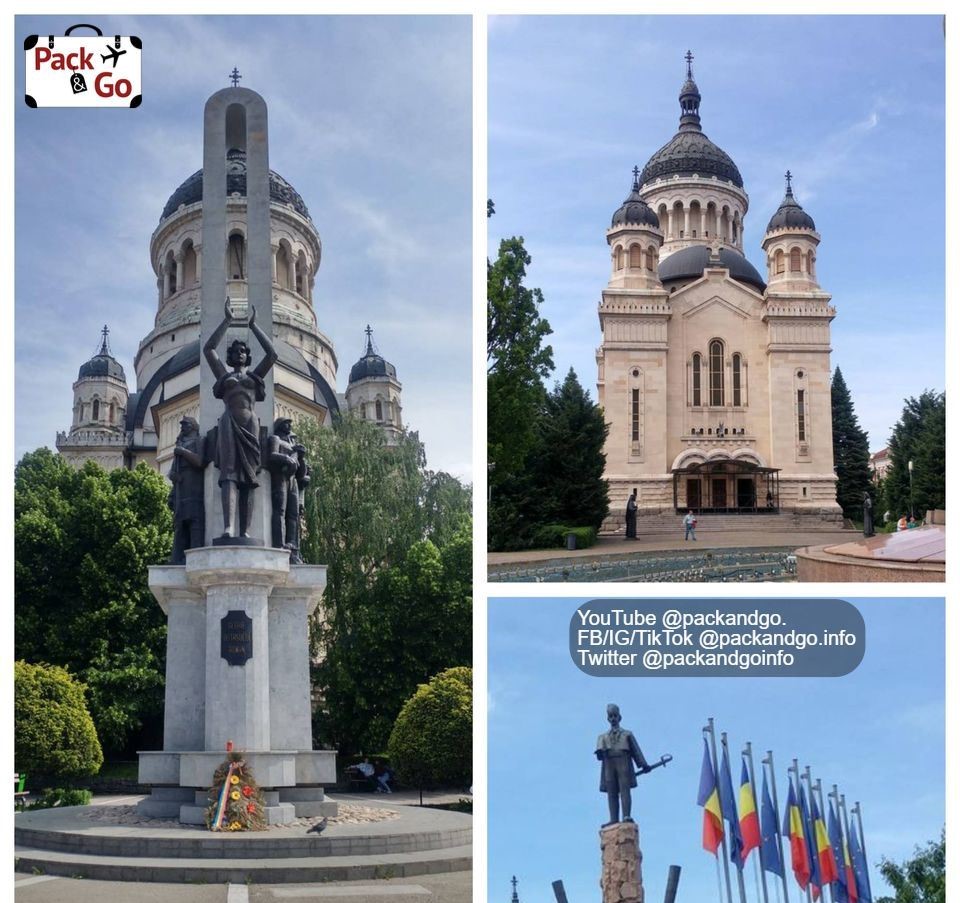
It looks massive, yet it is around 10 meters shorter than Saint Michael’s church in the center of Cluj.
Inside it, you will see very traditional orthodox Christian icons and a massive gold altar. The ceiling is really high and it makes you feel like a little ant inside.
Transylvanian Museum of Ethnography (Romulus Vuia Ethnographic Park)
We save one of the best places to visit in Cluj-Napoca for last, the ethnographic park! There is a very cool new trend in this part of East Europe to create open-air ethnographic complexes. We have seen them in Bulgaria, Romania, and Hungary.
The Romulus Vuia ethnographic park represents an old Transylvanian settlement from the 17th to 20th centuries. With all the thematic architecture, traditional crops, art and crafts, and even animals.
This place is very family-friendly, so if you are traveling with your children or elderly members, you can all enjoy it together.
The whole idea is to go back in time, to when there was no Internet, no electricity, and life was simple. See how people lived and what profession did they have. You can imagine you are a peasant or a lord, from the middle ages. Think about what could you do during the time of Mattias or John. Would you be a soldier, a craftsman, a priest a farmer, or a hero?
It is a bit further from the center, but you can reach it by public transport or a taxi. If you feel like walking there, and you are a good walker, go for it! It is your choice.
Romulus Vuia Ethnographic Park entrance prices as of Spring, 2023
-
Adult ticket: 10 lei (around 2 euros)
-
Children or student ticket: 2.5 lei (around 0.50 euro cents)
-
Adult with disability ticket. 2.5 lei (around 0.50 euro cents)
-
Pensioner ticket: 5 lei (around 1 euro)
https://www.muzeul-etnografic.ro/en/parcul-etnografic-national-romulus-vuia/history
What to visit around Cluj-Napoca?
After visiting the best places in Cluj, and if you still have some time to spend, there are a few places near Cluj-Napoca that are worth your attention. They will broaden your historical knowledge of Romania and be quite fun to visit.
Corvin Castle(a.k.a. Hunedoara castle, a.k.a. Hunyadi castle)
We can’t miss Corvin Castle. Yes, it is almost 200km away from Cluj, but it is more than worth it to visit. It is one of the most beautiful castles in the whole of Europe.
It is a great-looking castle built in the 15th century. The castle was owned by John Hunyadi, a well-known ruler of Hungary, and the father of Matthias Corvinus. Remember, this territory was Hungarian for many years. Thanks to John Hunyadi, the Ottomans were stopped. There are numerous battles between different alliances from Europe and the Ottomans.
But let’s not get carried away and get back to the castle. Where does the name Corvin Castle come from?
The name Corvin comes from the Latin word “Corvus” which translates to “raven”. So it is the Raven Castle. Epic name!
The castle has a Renaissance-Gothic style, it is located on the top of a hill and the River Zlasti passes next to it. There is a stunning bridge that connects it to Hunedoara town. The place is so scenic that plenty of movies have been shoot here. Some of the titles that you might have seen are The Nun (2018), Ghost Rider: Spirit of Vengeance (2011), BloodRayne (2005), and multiple vampire and medieval stories. Yes, many about Vlad Tepes (a.k.a. Dracula).
Check out the complete list of movies shot here (IMDB link).
Corvin Castle entrance prices as of Spring, 2023
-
Adult ticket: 40 lei (around 8 euros)
-
Pensioner ticket: 20 lei (around 4 euros)
-
Children or student ticket: 10 lei (around 2 euros)
-
Photo fee – 6 lei
-
Video fee – 20 lei (around 4 euros)
-
Children and adults with disability enter for free. The same goes for preschool children.
http://castelulcorvinilor.ro/info-vizitatori/?lang=en
Lake Tarnita
If you like nature, you would like Lake Tarnita. It is around 30 kilometers from Cluj-Napoca and provides a great place for relaxing. You can get a picnic back and spend a nice afternoon here. If you are not in a hurry, you can find tourist activities for a whole weekend around the lake. There are multiple caves and waterfalls around, and you can get on a boat ride, to see each of the tourist attractions.
| Follow PackAndGo.info at: | |
| YouTube | @packandgo. |
| @packandgo.info | |
| X | @packandgoinfo |
| @packandgo.info | |
| Bluesky | @packandgo.bsky.social |
| TikTok | @packandgo.info |
Turda Salt Mine (Salina Turda)
The Turda Salt Mine is located in the town of Turda, around 35km away from Cluj. You might think, why should I check a salt mine? What’s next, a knitting contest of pensioners?
This place looks out of this world! It has eye-poping views of the great miners’ tunnel, designed with logic and style. They are full of light and create an atmosphere of a post-modern underground world. You should come here to feel it by yourself.
Apart from this, you can enjoy multiple activities inside Salina Turda like bowling, pool, table tennis, mini-golf, and even a show inside its amphitheater.
We know, we were supposed to show you the best places to visit in Cluj, and we got a bit carried away. But that is how it works sometimes. You start to explore a place and slowly increase the radios to 200km around!
Turda Salt Mine entrance ticket costs 30 lei - around 6 euros.
https://www.salinaturda.eu/en/access/
Durgău Salty Lakes
While in Turda, you can also enjoy Durgău Salty Lakes. People in Romania say that swimming, or just floating in this salty water is great for your health. I can say that it is definitely pleasant.
The lakes have been in use since the 9th century, so you can say that it is an attraction, worth the attention of the Roman royalties.
Durgău Salty Lakes ticket prices as of Spring 2023
-
Adult ticket: 15 lei (around 3 euros)
-
Pensioner ticket: 10 lei (around 2 euros)
-
Children above 3 years old or student ticket: 10 lei (around 2 euros)
-
Children under 3 years old enter for free.
https://www.salinaturda.eu/en/locatie/durgau-swimming-pool/
Before you go.
We hope that our list of the best places to visit in Cluj-Napoca inspired you to book your next trip. Yes, it is not as big as Bucharest, but it is still worth your attention. You can enjoy a nice weekend with your couple or even a whole relaxing week here in Cluj and its surroundings. And later who knows, maybe head to Sibiu (read about Sibiu) or Brasov. They are even more exciting!
- Details
- Written by: Gianna Esquivel
- Hits: 1461
Today, it was a packing morning. We left Cluj-Napoca to reach Sibiu. It sounds like the best decision because Cluj did not captivate us this time. It seems that the cultural and vibrant soul of this city got extinguished by the restrictions caused by the current pandemic and has not yet been able to ignite again (May 2022). Maybe, another time, Cluj. But right now, it's time to leave. Sibiu has a secret and we will find it out!
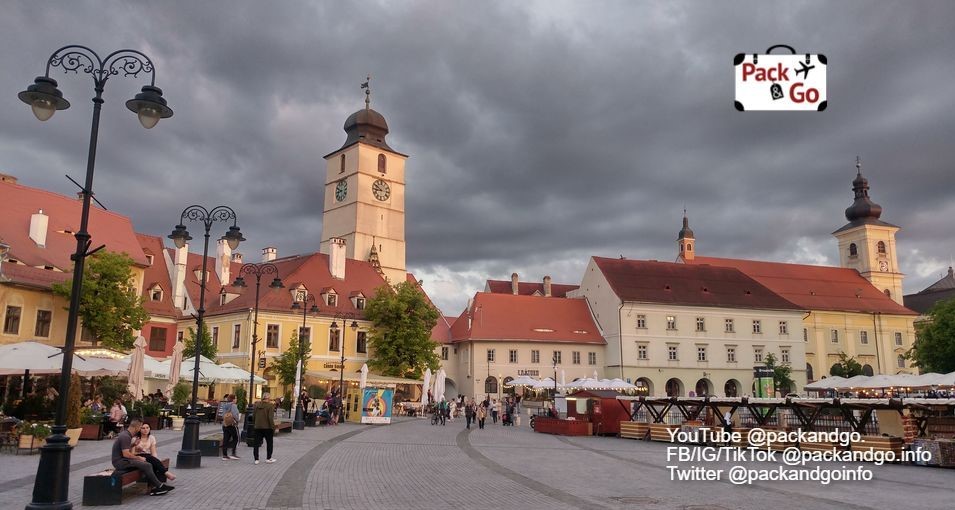
How is driving in Romania?
Driving on Romanian highways has turned out to be a stressful experience. As an automatic reflex, when we drive out of our countries, we are more careful and we pay more attention to everything, the road, the signs, other drivers, speed limits, etc. We are fish out of our known water so better to watch out! But here in Romania, when it is about speed, sometimes it is crazy. Not even truckers, driving those very heavily loaded vehicles, respect the speed limits. During day and night, some have annoyingly pushed us with the lights, insults, or the claxon to speed or to move out of the road for them to overtake our car. It can be very stressful!
Therefore, we have added some extra stops to relax when things go hard and we feel already tense. On the way to Sibiu, we took a break in a town called Tupo.
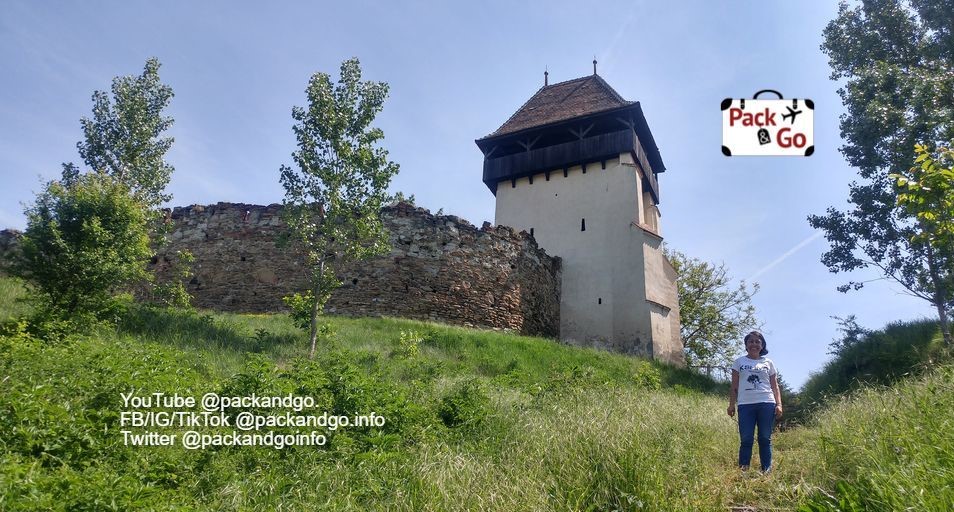
It is a very small place but its quietness was ideal to relax and get back to the road. We haven’t talked much about the benefits of traveling by driving. It is comfortable in different senses. For instance, during this trip, we managed to stop every time we saw something interesting. We have found nice waterfalls, caves, etc. that were not in our original plan but they crossed our way. We miss those chances while traveling by other means of transportation.
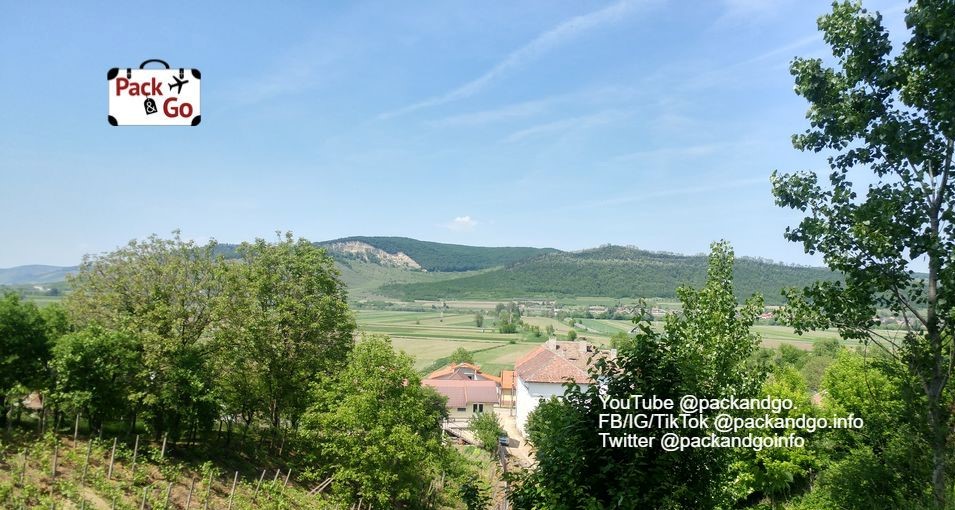
Where is Sibiu?
Take your map and you will find Sibiu in the central part of Romania, to the West of the country. If you take the Romanian capital Bucharest as a reference, Sibiu is in the northwest. It straddles the Cibin river, a tributary of the Olt river.
By driving, Sibiu is 173 km (2 hours and 5 minutes) away from Cluj-Napoca, based on Google calculations. From Bucharest, Sibiu is 280 km away and it takes approximately, 4 hours and 25 minutes to reach it, based on Google too.
A bite of Sibiu’s history
Back in the 12h century, German settlers constructed seven walled fortresses in Transylvania. Sibiu was one of those fortresses and it became the most important. For this reason, Sibiu has a German name too, Hermannstadt (primarily called Hermannsdorf).
In the 14th century, Sibiu was already a relevant trade center. Even though it is frequently referred to as a town, it got the status of a city long ago, in 1366. In its early times, a guild organization prevailed. By 1376, there were nineteen guilds. Until 1941, its ethnic composition was mostly German and that influence remains in the city. At that time they were not called Germans, but Transylvanian Saxons. Many of them finally emigrated to Austria and Germany during the 1950s and even after the 1990s, but some stayed in Sibiu.
Shortly described, from its medieval origins, this city center got divided and developed into two parts. The lower town was established on the banks of the Cibin river and the upper town was erected on a terrace. Both towns were connected by a district full of narrow and cobbled alleys.
| Follow PackAndGo.info at: | |
| YouTube | @packandgo. |
| @packandgo.info | |
| X | @packandgoinfo |
| Bluesky | @packandgo.bsky.social |
| @packandgo.info | |
| TikTok | @packandgo.info |
What to visit in Sibiu?
We arrived in Sibiu and the weather was very nice so we got motivated to explore! We just parked the car in our accommodation (a comfortable, clean, cost-effective, and well-located guesthouse), got some recommendations from locals, and started our way to the historic center or old town, as people also call it.
The historic center or Old Town
You know when you arrived in the Old Town because you see the medieval walls of the old fortress wrapping it around. Before getting there, what you see is a small but modern city, growing (we saw different ongoing constructions of buildings), with big shops, supermarkets, lots of cars, public transportation, etc.
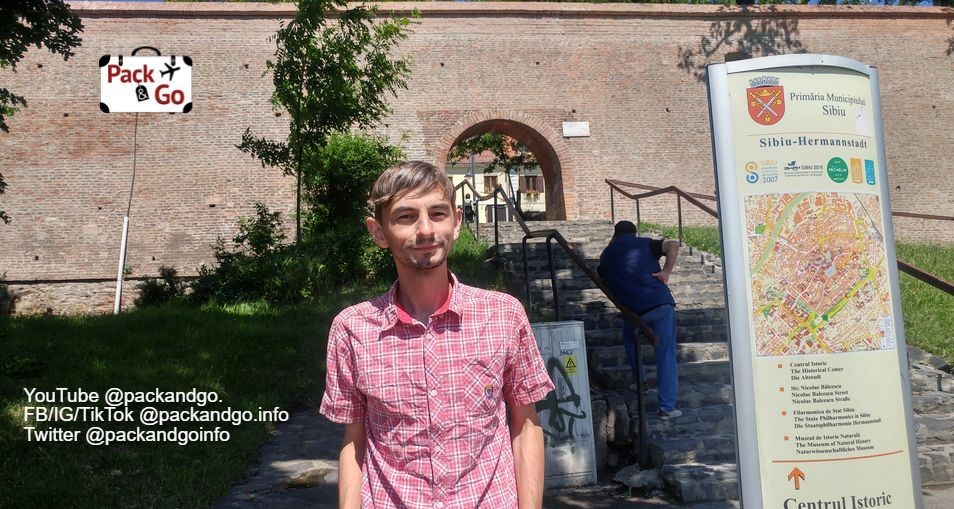
Once you get inside the Old Town, everything changes dramatically! You walk on cobbled streets and stairs, you see narrow passages, colorful old-style houses, towers, fortified churches, monuments, statues, and many historical buildings. There is no way you don’t feel the big difference that means to be outside or inside the walls of the medieval center in Sibiu.
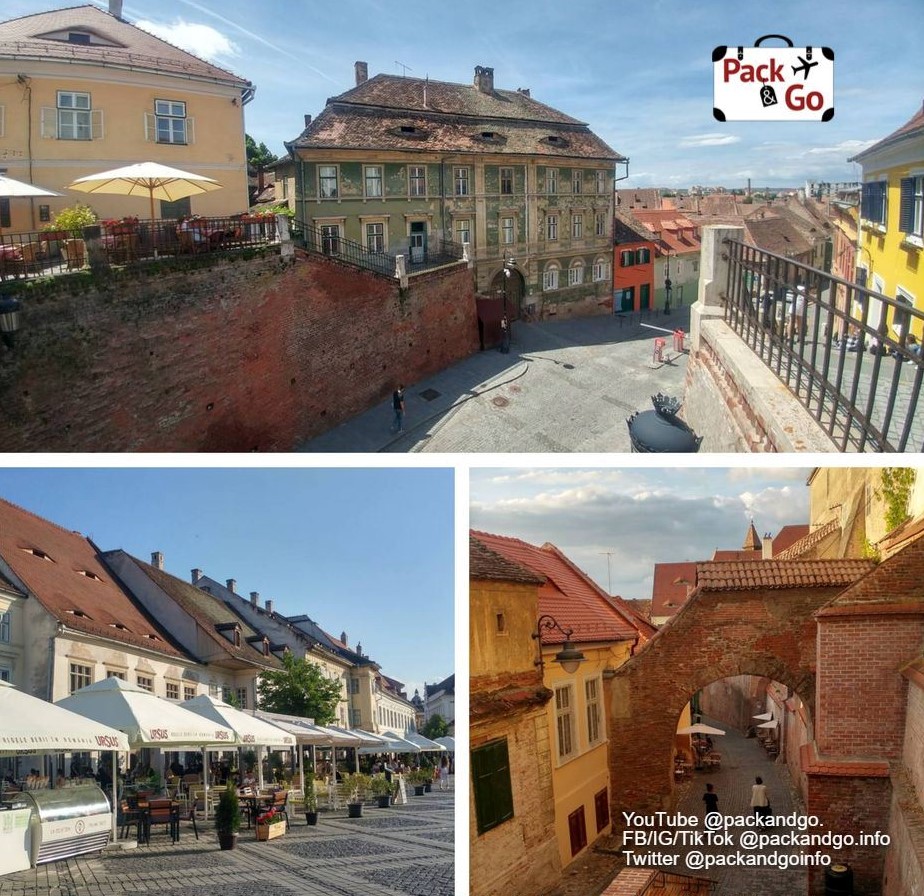
Besides, this, once around these old buildings, we felt something different, maybe weird. Well, at that early point, we could not describe what exactly it was, we just remembered “Sibiu has a secret”. Anyway, let’s keep going with Sibiu’s tour. We will talk about Sibiu’s secret later!
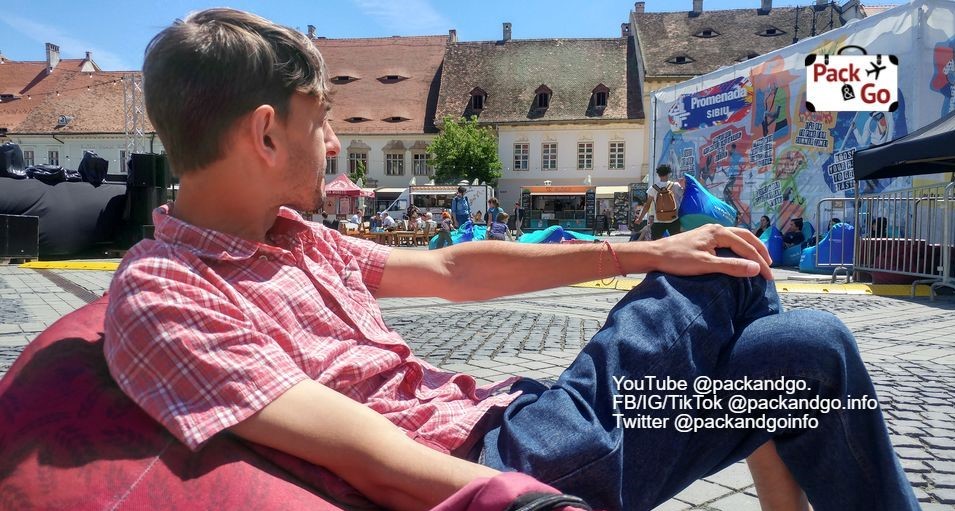
The Great Square or Big Square (Piața Mare)
This square is probably the most popular attraction in the historic center of Sibiu. It has been the center of the city since the 15th century. Here, different cultural events take place during the year. It seems to be a very active place and it can look different based on the time you visit it due to the variety of events it hosts.
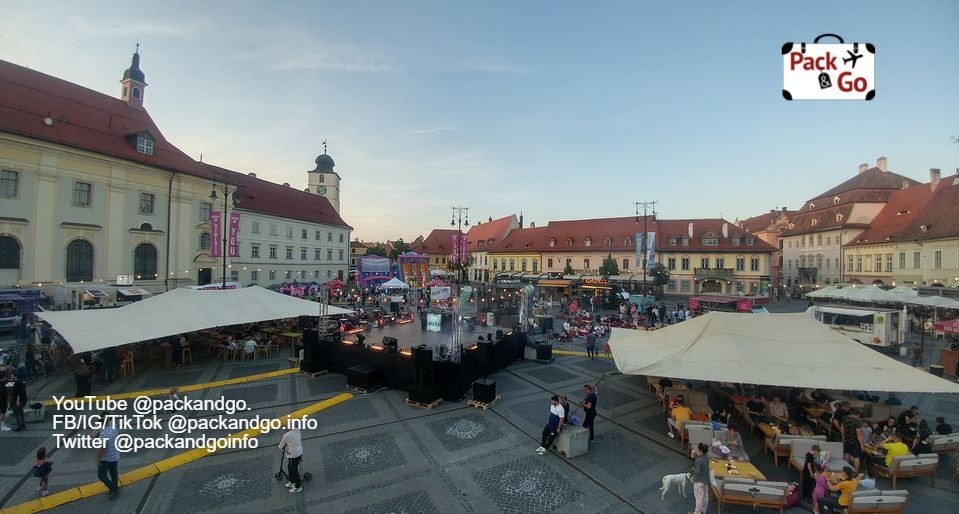
It is very pleasant, well-preserved, and beautiful. You can see many heritage buildings together with renovated houses mostly from the 15th to the 17th centuries. And exactly this old space gathers most of the youngest people of the city, perhaps the country, and even foreigners, through music concerts, dance performances, all types of exhibitions, film, theater, and gastronomy festivals, etc. Sibiu’s Christmas Market is very popular. People say this Great square looks very nicely ornamented and lightened that it becomes like Santa Claus's village.
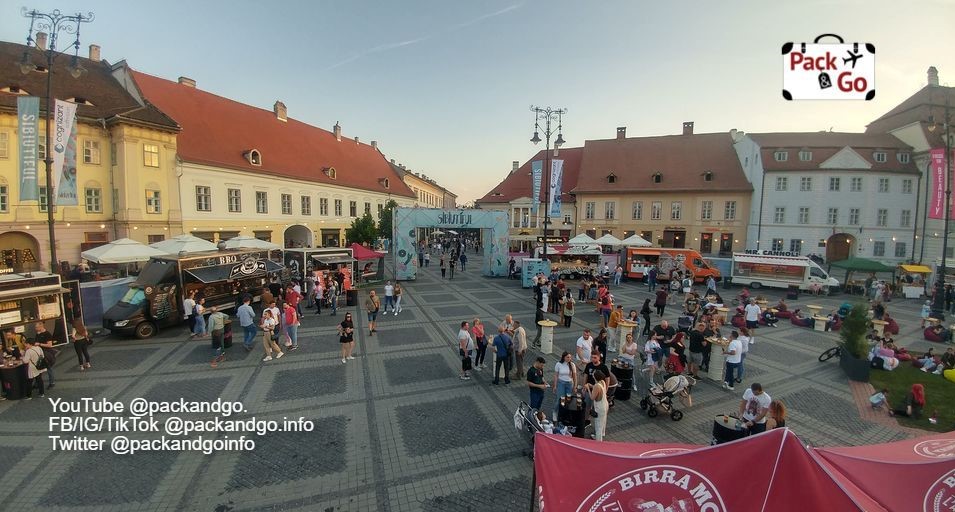
When we arrived, we found a music festival, food trucks, and comfortable spaces to enjoy both, the music and the food. It was named “Sibiutiful”. Our day could not be better. The Big square is wide, cute, and comfortable. You can explore as superficially or deeply, as you prefer, its different buildings, statues, cafés, and restaurants. We spent a complete day there and it was a very cool experience!
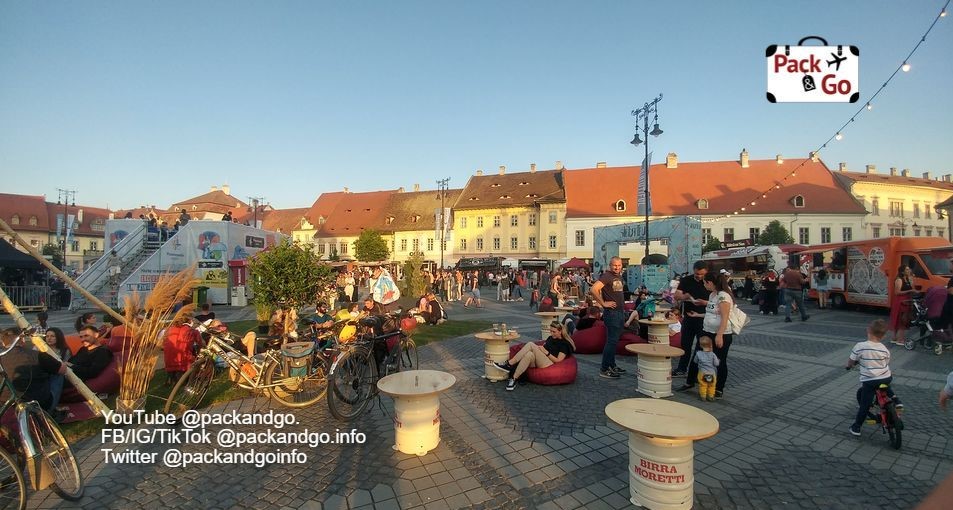
Wait a minute, the strange sensation we could not describe previously still was there. A sort of strange surveillance over us. M, while taking pictures, discovered a clue of that suspicious feeling we had. Was it only paranoia? What is Sibiu’s secret about? We will tell you soon.
Super Mama
This is not a museum, historic building, or monument. But you will be hungry at a certain point and believe us, this eatery must be officially called a tourist attraction of Sibiu! You have many choices of restaurants all along the historic center. Fancy restaurants, nice terraces, cafés, etc. Their menus are ok, no doubt about their quality. But as it happens in almost every place on the planet nowadays, the menu has been invaded by international food. It is not bad, but come on, we are not visiting Romania for eating American-style burgers or Italian pizzas. We are curiously craving local dishes, Romanian seasoning, and taste!
And honestly, we found this in Super Mama! The menu there is wide, the food is tasty, the portions are much better than in fancy restaurants, and the cost is very fair. The restaurant is clean and the service is quick. It can be a challenge because the staff does not speak much English and they want to make the service agile so communication can slow down things there. The good news is many locals eat there and as long as the line doesn't get stuck, due to tourists, they help with translation. Whatever is necessary to keep the line moving hahaha.
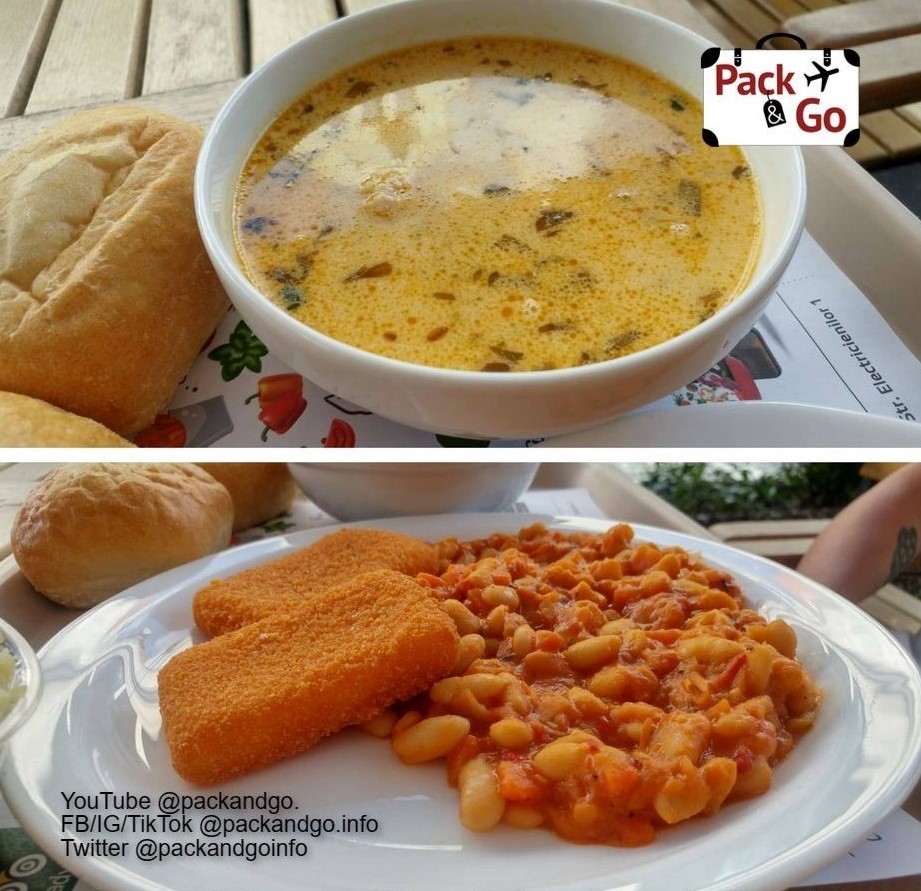
We visited the Super Mama that is the center and it has space outside for you to seat and eat there. But we saw at least 2 more branches around. One Romanian man who helped us to choose our meals, told us those are the type of meals Romanians eat regularly. “It is truly the type of meals my mom cooks”, he said, so the name of the restaurant is accurate. And that was music for our ears and good news for our belly! Seriously, the food was very tasty and truly Romanian so we recommend it a lot!

Brukenthal museum (Muzeu Brukenthal)
Once you are in the Great square, you will see the Brukenthal museum and you will feel that weird sensation again. A sort of surveillance or only paranoia? Anyway, there are more museums in Sibiu but this one is considered the oldest museum in Romania, so the largest art collection of Transylvania is hosted there. That may arouse your curiosity. Besides that, the museum’s building and its furniture are part of the attraction. Baroque style prevails there and we were told that there, Baron Samuel von Brukenthal, a Transylvanian governor lived. That is the reason for the museum’s name.
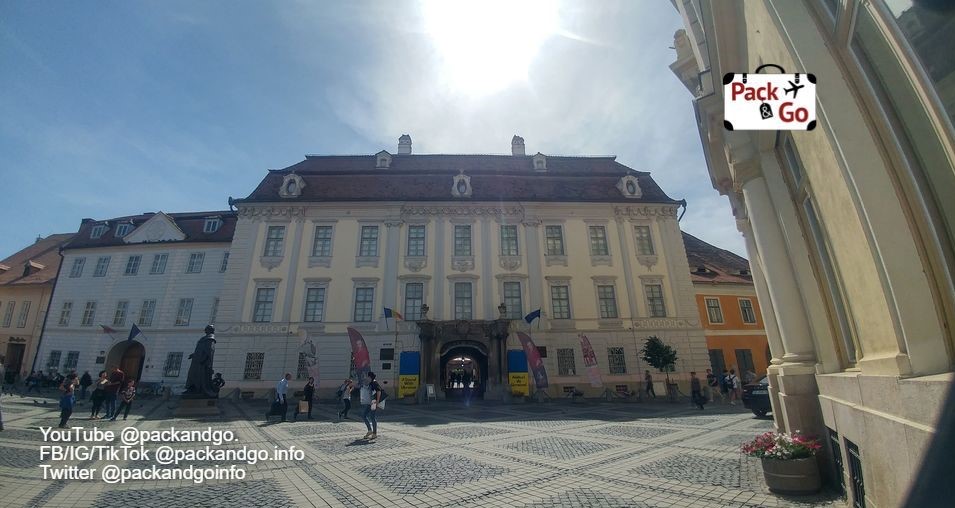
You can check details and updated ticket prices here, https://www.iabilet.ro/bilete-palatul-brukenthal-76211/
Council Tower (Turnul Sfatului)
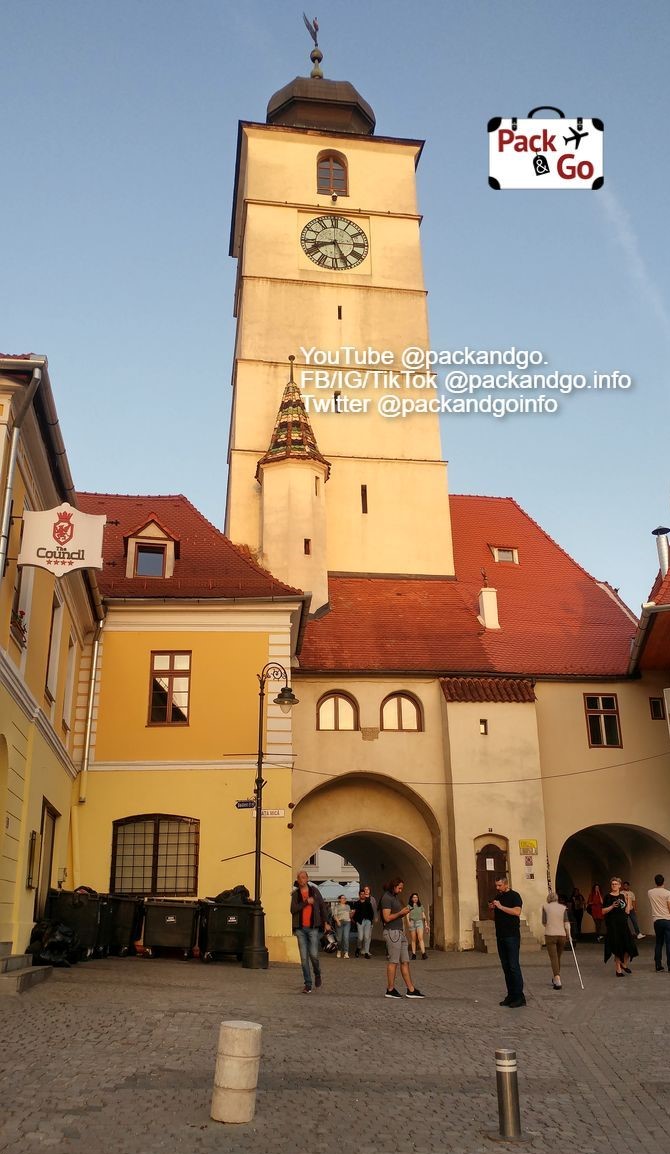
This is a nice tower located between the Great Square and the Small square. The Tower’s passage connects both squares to be more precise. In the past, it worked as an entrance gate to the second belt of fortifications. There is access to the tower through a small door. There you will find a spiral staircase that leads you to the top (seventh floor). It is not hard climbing and on the way to the top for enjoying the panoramic view of Sibiu, you also can see the clock mechanism.
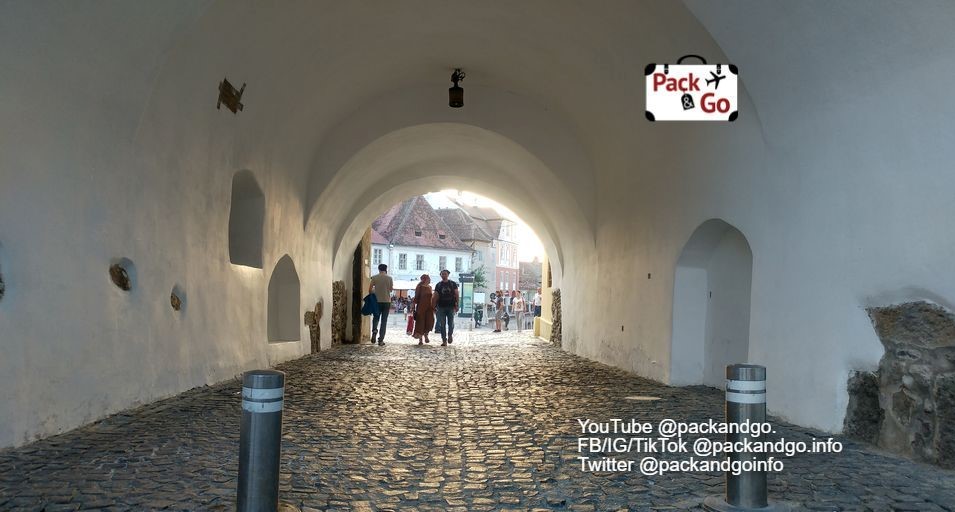
We thought “ok, if Sibiu has a secret, it should be visible from this tower”. And yes it was in front of us, all the time!
Small square (Piața Mică)
Once you pass beneath the Council Tower (through the passage), you reached the Small square. In the past, this square housed mostly merchant buildings. Nowadays, you will find nicely restored buildings, shops, cafés, more restaurants-terraces, and souvenir shops. Walking around this space is just as pleasant as the rest of the historical center.
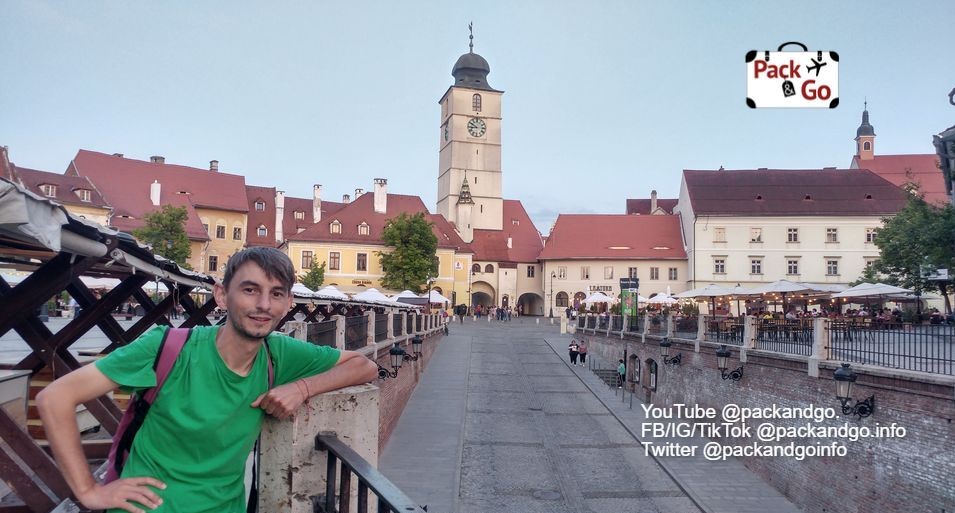
Huet square (Huet Piața)
The biggest icon and reference for you to identify Huet square is the Evangelical Cathedral of Sibiu located there. It is 73 meters in height and its construction took quite some time. It started in 1321 and was ready in 1520. It was erected exactly in the place where an old church existed since the 12th century. It is considered one of the most impressive Gothic-style churches in Transylvania. Here the son of Vlad the Impaler, Mihnea cel Rau (Mihnea the Evil), was killed. If you are not afraid of heights, you can climb to reach a viewpoint at 55 meters height.

In Huet square, you also will find other constructions mostly from the 15th to the 18th centuries, like the Brukenthal high school, the Stairs Tower, and the Parish House.
The Bridge of Lies (Podul Minciunilor)
This bridge is a great accent in the landscape. It takes everybody’s attention so frequently you have to wait for others to take their pics before you can take yours. It was the first Romanian bridge cast in iron and a beautiful icon of Sibiu. It connects the Small square with the Huet square.
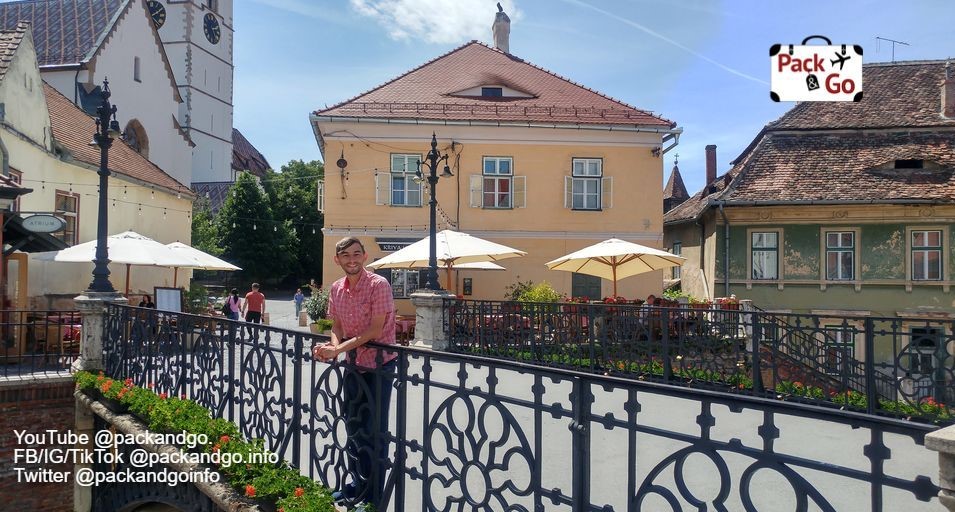
This bridge is the protagonist of different legends. The one that local people told us there was this: “if someone tells a lie while being on the bridge, it will know it and as a result, it will creak”.
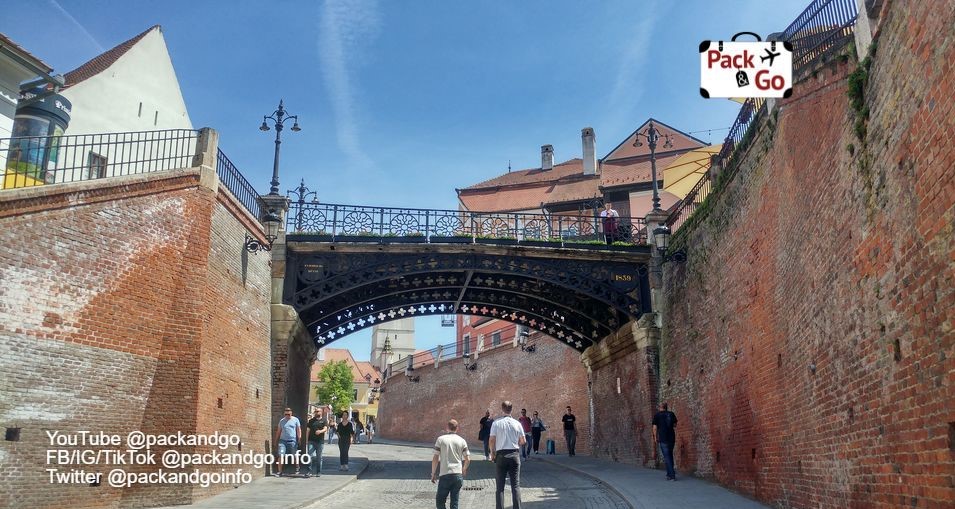
Come on! First, “Sibiu has a secret”, then, we got this sensation like being observed while exploring Sibiu, and now, is the bridge a lie detector?! Haha, too much paranoia here hahaha. We called the bridge a “lie detector” as a joke, but actually, there is something fun, due to this legend, the bridge has truly become the spot for lovers to express their love. To do it here involves proof of honesty and sincere or true love. Nobody wants to tell a lie here to make the bridge creak and maybe collapse hahaha. That is cute, don’t you think so? The legend goes dark but then there is a corny twist, not bad hahaha.
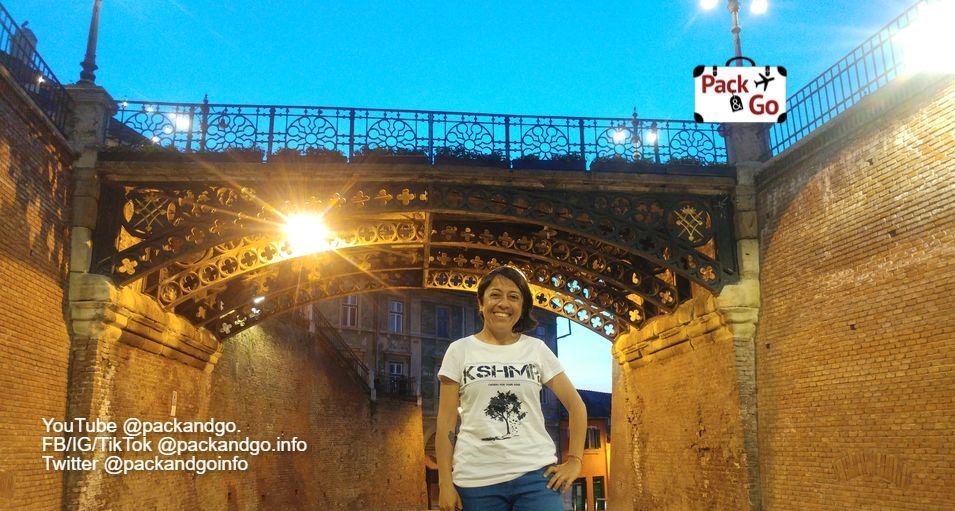
The Stairs tower (Turnul Scărilor)
In the past, there were three access gates to the first fortifications’ enclosure, but only one was preserved. It is what now is called the Stairs tower and it dates back to the 13th century. The tower’s ground floor is the oldest building that has been preserved and nowadays, it is a café. Once there, you will realize how it connects the upper city with the lower one.
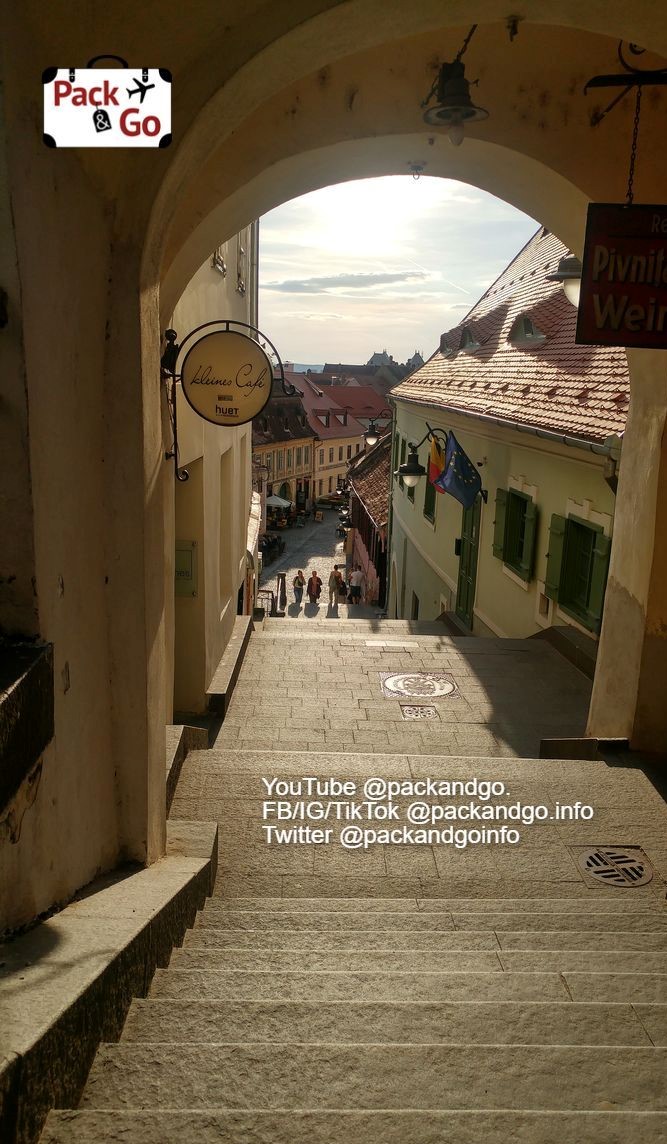
Lower city (Orașul de Jos)
The lower city was built beyond Sibiu’s fortifications. You won’t find many statues or monuments there but some of the oldest houses still exist and can be found there. Walking around this lower area is pleasant for the eyes.
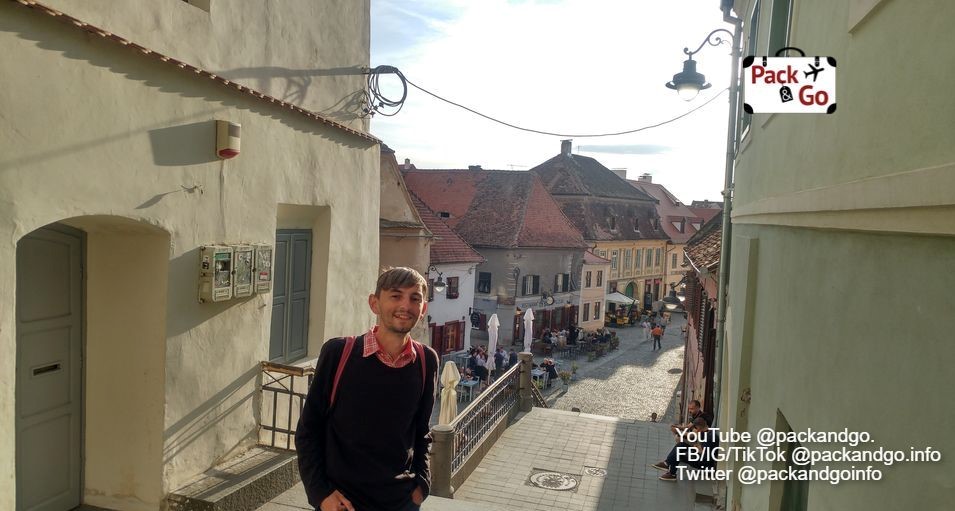
Cetății park (Parkul Cetății)
Along the medieval walls and the alley of celebrities, you will find a nice path for walking on and it will lead you to the park (southeast side of the medieval fortress). There is a popular street here called Cetății so it can be the reference you need to enter in your GPS if you need it. Exploring the park can be relaxing for you and a chance to see the best-preserved fortifications of the old town. They have been renovated more than once or twice so you will find three towers there in very good condition. The Archebusiers tower (later renamed Postăvaris tower), the Carpenters tower, and the Potters tower.
ASTRA museum (Muzeul ASTRA)
This is a very popular place and Romanians proudly recommend it. The ASTRA museum or Museum of Traditional Folk Civilization is located in an area of the Dumbrava Sibiului Natural Park. Taking the historic center as a reference, the museum is southwest of Sibiu. Based on Google calculations, it is 7 km away from Sibiu’s center (20 minutes by driving). There is public transportation to reach it.
This museum recreates the life of an old Romanian village with its wooden churches, traditional houses (over 400), old mills, different workshops, traditional music, dances, and much more! The concept of an ethnographic exhibition or museum should be familiar to you, but this is considered the largest in Europe, and it is in very good condition. Be ready for approximately, 10 km of the exhibition (42 hectares of exhibition, 96 hectares in total). It will take you some hours. It can be a one-day trip for you.
Check details about the schedule, ticket prices, parking area, etc., and don’t miss it!
https://muzeulastra.ro/en/tickets-and-subscriptions/
Sibiu has a secret! Why do its countless eyes constantly watch you?
Let’s address this topic right now! Yes, Sibiu has a secret! Sibiu has countless eyes! We felt it from the moment we arrived in the historic center and during our tour there. And we confirmed it thanks to the pics we took. Here you have the evidence!

It is the houses, guys! It is not the people staring at you. It is nothing about surveillance cameras following your steps and moves. The old houses there! They have eyes!
Depending on your mood, those eyes can look very cute or disturbing, maybe threatening hahaha. They are present in many houses and buildings. Therefore, the eyes are countless! It is a detail that directly gets your attention once you are there.
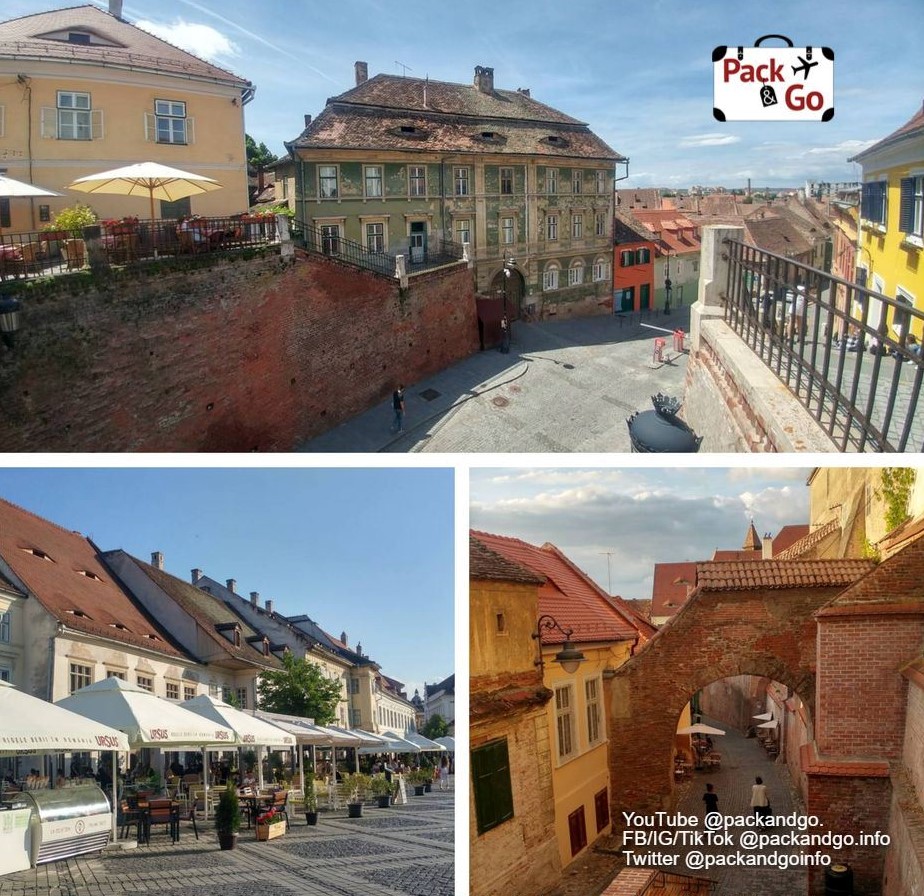
Why do its countless eyes constantly watch you? Of course, we investigated their purpose and the explanation was simple. They are ventilation windows especially helpful to remove the heat of attics. Their presence is as visible as they have become a landmark for Sibiu. If you have visited Sibiu just check the pics you took. The eyes are everywhere! One Romanian lady told us “those eyes are proof that houses here never sleep” hahaha. Locals like the idea of keeping the tale alive and scaring visitors a bit hahaha It is nice! These eyes can be a great element for a thriller or horror movie!
Now you know Sibiu’s secret. This city has eyes! They don’t exactly watch you but it feels like that when you are around.
Talking more seriously, some Romanians told us that during the hard times of communism and oppression, local people felt those eyes as real surveillance. They did not doubt people were spying, following their moves to ensure they were not plotting against the government.
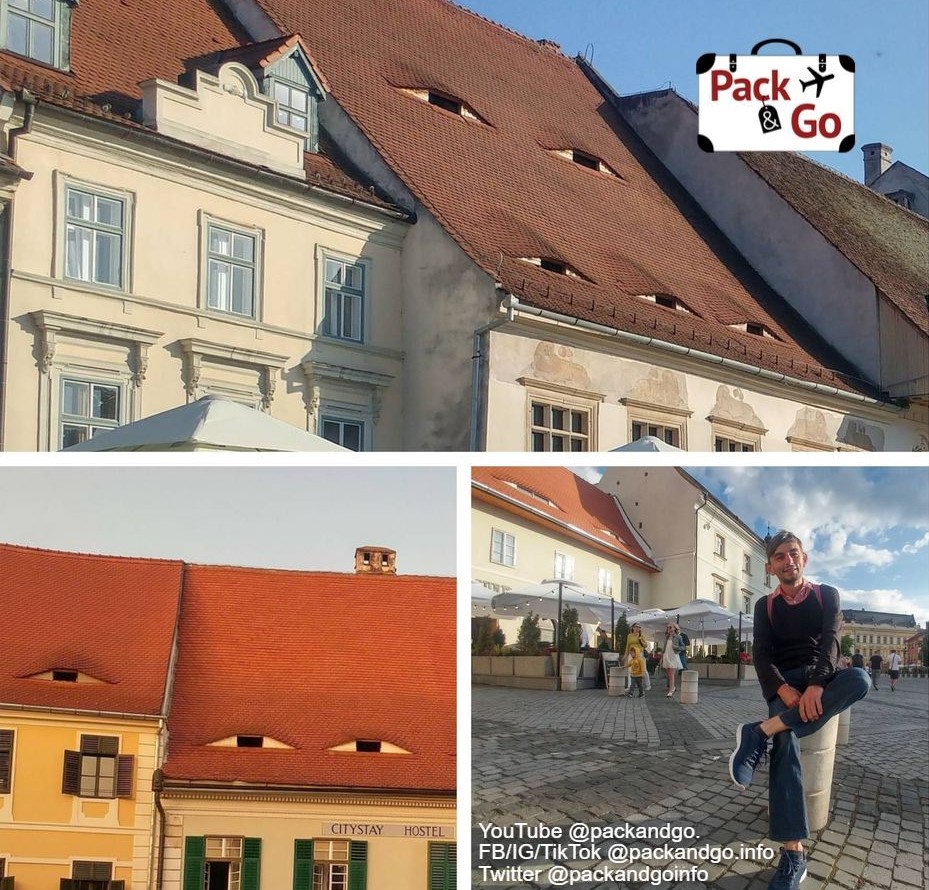
Then, yes, Sibiu is popular around because of its countless eyes. If you visit this city, get familiar with the eyes from the first moment so you don’t feel paranoid all the way. Besides, this is a cool detail that will keep Sibiu in your memories long time, hopefully, forever.
Conclusion
To visit Sibiu was a great decision! If you are hesitating, don’t! Include it in your next trip. You won’t regret it! Once there, explore, enjoy, and discover every corner and the stories that Sibiu has in store for you. Walk, we strongly recommend it! And behave properly, remember Sibiu’s countless eyes are watching you!
If you like Romania, you may find interesting:
Timisoara, the progressive city that broke the communist chain
Bigar, the once stunning waterfall that is collapsing!
Orsova, Romania, a beautiful discovery kicked off by an error
Sibiu has a secret! Why do its countless eyes constantly watch you?
| Follow PackAndGo.info at: | |
| YouTube | @packandgo. |
| @packandgo.info | |
| X | @packandgoinfo |
| Bluesky | @packandgo.bsky.social |
| @packandgo.info | |
| TikTok | @packandgo.info |
